Kumbakonam Adi Kumbeswara and Upiliappan temple interior
"What should we see in Kumbakonam?" I asked my cousin, as we planned our family excursion through South India. There would be 13 of us traveling, ranging in age from my 94-year-old grandfather to Amara, our not yet 1 year old, packed in a mini-bus to see the best of Puducherry, Kumbakonam, and Tanjore in one week.
"Temples, of course," he responded. Kumbakonam is a town of temples so his answer was no surprise. Almost 200 temples are packed into this 25 square mile town at the intersection of the Kaveri and Arasalar Rivers, deep in Tamil Nadu, the most southern portion of India.
384a.jpg?imgmax=1280)
Detailing on the gopuram of the Adi Kumbeswara Temple
My cousin reeled off the names of temples, each with both historical and religious significance. But, there was one I found in my Internet research that he never mentioned. "What about Airavatesvara Temple?" I said, stumbling over the long word.
"I don't know it," he responded. He paused for a second and said, "It must not be very important. It is named for Indra's white elephant --- the steed that carried the Lord of the Devas." My grandmother whose earliest childhood memories are swimming in the Kaveri River and going to school in Kumbakonam, didn't know the Airavatesvara Temple. No one in my extended family --- most of whom visit South Indian temples on their holidays --- had heard of Airavatesvara, either.
But, I insisted that we go and visit. It was listed as an UNESCO World Heritage Site and the Wikipedia page made it sound interesting and, after all, it was only a few miles away from our hotel.
Elephant blessing at the Adi Kumbeswara Temple
We reached Airavatesvara after a long day visiting temples, temples, and more temples, each blending into the other. Amara was tired and annoyed and both Patrick and I were pretty unimpressed by that point.
There's a difference, you see, between visiting temples for their religious value and visiting, as we did, for purely the aesthetic and archaeological interest.
384a.jpg?imgmax=1280)
Airavateswara Temple sunset
My extended family is religious in a way that I will never be. It's something that I think comes with growing up in India whereas growing up in the United States. Religion in India is not optional. There is no delineation between church (or temple) and state. Religion is integral and integrated into every part of every day life in India.
Tanjore Brihadisvara Temple
In Chennai, we woke in the morning to the sound of bells clanging at the temple. Our auto rickshaw drivers had small pictures of Vishnu, Lakshmi, or Shiva on their dashboards. Every store has a small shrine in it, as does every home have a puja or prayer room set aside. My extended family avoids garlic and onions on certain days of the week and avoids meat altogether. Muslims are equally devout at their mosques as are the Christians at their churches. It is a country where religion pervades every moment of every day.
And, Indians are passionate about their temples. At the busier and more important temples, such as the Tanjore Brihadisvara Temple, the packed crowds suffocate me. One of my earliest memories of India is a frantic devotee pushing my seven year old self to the ground inside the Mysore Chamundi Temple so that she could get a closer glimpse of the Goddess. Even now, as an adult, though I use my elbows to mark my own space, the press of unwashed, undeodoranted people in the stifling interiors nauseates me. And for what? The crowds come together for a momentary glimpse of a tiny statue or figure in semi-darkness.
Patrick and Amara at the Tanjore Temple
Devoutness to the point of fanaticism does not appeal to me, which is perhaps why I have never truly appreciated the large South Indian temples. I can admire the gopuram, the intricately carved exterior pillar at the top of the temple, and the exterior painting. But, in most temples, the interior has been built on the original structure, over and over again, so that the ancient beauty of the temple is lost in expansions of cement and ceramic tile. Others are rarely cleaned, leaving grease marks at the bottom of my feet as I walk through their interiors.
Airavatesvara Temple
But, then, we arrived at the Airavatesvara Temple. It flew in the face of everything I've ever known --- or thought I've known --- about South Indian temples. It was built in the 12th century by the powerful Chola empire, who ruled much of present day India and many of the surrounding islands from their headquarters in present day Tamil Nadu. The Chola empire might hold the record for the longest dynasty in history: this family ruled southern India for almost 1,500 years, beginning in the 3rd century BCE until the late 13th century AD.
The Cholas believed in building, trading, and the proliferation of art and music. Much of the Hindu art and belief in Southeast Asia, including the adoption of the Ramayana by the Thai, was due to the efforts of traders, artisans, and teachers during the Chola empire. But, empires crumble and temples disappear.
384a.jpg?imgmax=1280)
Airavatesvara gopuram
There are three --- only three --- of the great Chola temples still standing and without remodel, reconstruction, or alteration since the days of the Chola kings. The three temples have been listed together as the "Great Living Chola Temples" as a UNESCO World Heritage Site, and include the Tanjore Brihadisvara Temple, the Airavatesvara Temple, and the temple at Gangaikondacholapuram (yes, that's a mouthful) near the Ganges River. (This has a great list of the
Chola temples found in Bangalore
though all of these temples have been renovated, refurbished, or repainted, so it is difficult to differentiate what was original versus modern.)
384a.jpg?imgmax=1280)
384a.jpg?imgmax=1280)
384a.jpg?imgmax=1280)
The steps at the Airavatesvara Temple
The Airavatesvara Temple is the smallest and least important of the three. Legend has it that a sage cursed Airavata, the white elephant who was steed to the king of the gods, turning Airavata black and mottled. Airavata bathed in the sacred waters here and prayed to Lord Shiva, who turned the elephant's skin white again. Unlike the Brihadiswara Temple which was built to celebrate the Chola Empire's communion with Lord Shiva, the Airawatesvata Temple was meant to relate to the populace.
Airavatesvara Temple Pillars
We climbed up the staircase written in ancient Tamil script, flanked by carved elephants and horse-drawn chariots on each side, with the elephant's trunk acting as the bannister. We stood in a hall of pillars, each pillar carved with scenes of daily life at the time of the Chola Empire. One pillar showed crowds of people arriving, throwing flowers, and dancing near the king sitting on a bull. Many of the figures on the stone are no bigger than my thumbnail and the priest inside acts also as our guide, pointing out the intricate details in the temple. He was clearly proud of this strange, small temple.
384a.jpg?imgmax=1280)
Bull and elephant in one figure at Airavatesvara Temple
And, rightly so. We walked outside and soon fell into conversation with one of Tamil Nadu's archaeological experts, who has been spending a significant amount of time excavating and analyzing the grounds near the temple. He showed us this beautiful spot where, from one angle, the figure looks like a bull, reaching his head above another animal, and from the other angle, looks like an elephant laying her head on her baby's back, with her trunk spread out before her.
384a.jpg?imgmax=1280)
Airavatesvara Temple back
We exclaimed in delight and he showed us more of the temple's features, eager to share his discoveries with others. Once, he complained slightly under his breath that nobody sees these things.
I got that. In the hour we spent there, we had the place to ourselves. Once, we saw a tour group of Westerners who dashed in and out of this place, checking it off their list of India's World Heritage Sites. There were no devotees pushing, shoving, or clamoring to see the God. This place was quiet and empty, a rarity (impossibility?) in bustling India, and waiting since the days of the Chola kings for people to appreciate it.
Details
The Great Living Chola Temples are located around the cities of Kumbakonam and Tanjore (also known as Tanjavur), about 275 kilometers south of Chennai. Most go directly to see the Brihadisvara Temple in Tanjore which is, admittedly, gorgeous and immense. But, I think that the Airavatesvara Temple should not be missed, especially for the lover of arts, architecture, and antiquities.
We stayed at
Paradise Resort in Kumbakonam
which is a cute hotel geared toward tourists and tour groups. Guests can take a traditional bullock cart (or the much faster golf cart) to get to and from their rooms and there are onsite artisans who produce certain goods, as well as a menagerie of farm animals. While the rooms were nice, the reason I would recommend this hotel is for the food. If you want to try authentic home cooked Tamil fare, this is a great place to get your fill. Their lunchtime thalis were especially good. Every single person in my group --- most of whom are very critical when it comes to South Indian food --- liked the food here.
July 18, 2014
384a.jpg?imgmax=1280)
Picnic at the Presidio
It sounded too good to be true: good food and drinks, stunning views overlookign the Golden Gate Bridge, baby friendly, and completely free. But,
Off the Grid's Picnic at the Presidio
in San Francisco met all our expectations and more. In fact, it was one of the best foodie events we have been to this year.
Off the Grid ups the game for the food truck lover. They organize and work with hundreds of food trucks and food vendors across San Francisco to organize and coordinate food trucks at different locations. They've got a brilliant
constantly updated map that shows the location of food truck vendors
across the city. And, they run special weekly events throughout the year, including a twilight event at the Presidio and a Friday weekly market at Fort Mason Center.
Views of Picnic at the Presidio, including the bar and Bubbly Bar
We headed to Picnic at the Presidio on a glorious Sunday afternoon, sun and warmth replacing San Francisco's usual buffeting wind and fog. We flung aside our fleeces and meandered through the Presidio's Main Lawn, unsure of which of the thirty vendors we should visit. People sipped on champagne and mimosas, purchased from the Bubbly Bar, and beer and wine from the main bar in the center of the lawn.
Picnic at the Presidio
Behind me, a group of food lovers debated the respective merits of Napa Valley Merlots and Rieslings, while we tasted and judged our own food. Funny thing is that we're definitely raising a foodie. This kid will clamp her lips shut if you try to give her frozen fish nuggets but will happily devour an adult's portion of $12 per pound North Georgia smoked trout. And, truth be told, most of her food choices are the exact ones that we would have picked.
Her winners at the Picnic at the Presidio were our winners, as well. Amara was so delighted with Patrick's pierogis from the
Old World Food Truck
--- creamy, soft, and delicately spiced potato dumplings --- that we barely got bites. She wasn't impressed with my lemongrass tofu on a vermicelli salad from the
Little Green Cyclo Vietnamese truck
and I agreed that the flavors were bland and uninspired, lacking in punch and spice. We rounded out our meals with vanilla and nutella and strawberry creme brulees from
the Creme Brulee Cart
and all of us preferred the cleaner and lighter vanilla option. The fresh strawberries in the nutella creme brulee muddied the texture and flavor of that creme brulee.
But, honestly, those are just nitpicks. I would suggest Picnic at the Presidio even if the food wasn't good, and, for the most part, it was good. It was one of those lovely events --- full of good food, drinks, pups, babes, and happy people in the bright sunshine --- that I wish every city had.
Details
384a.jpg?imgmax=1280)
Off The Grid's Picnic at the Presidio is located at the Main Lawn on the Presidio. It is a seasonal event, running from April until Octoberish. Food trucks line one side of the lawn and food vendors, primarily from local restaurants, line the other side. The main bar and bubbly bar are located in the middle of the lawn. There is also a truck that provides dog supplies and a tent that has picnicking gear.
The food is a bit pricey, but most meals are under $12. Picnicking supplies are very expensive so I would suggest bringing your own.
The views of the bay are beautiful and, if you walk a bit to the end of the Presidio, you get great views of the Golden Gate Bridge. It's cold at the Presidio, so bring a jacket or blanket. But, on sunny days, the sun hits hard and there's no shade, so bring sunscreen and possibly a pop up tent to keep out the sun. As with all weather in San Francisco, prepare for every season in one day.
The grass is nice and lush, perfect for baby feet and dogs. This is a very kid-friendly event . We brought Amara in a stroller, which was convenient since we were able to keep her a bit shaded and also put food on her stroller tray. If possible, I suggest bringing a small bottle of bubbles with you for the kiddos because the breeze is perfect for bubbles. The picnicking station sells bubbles for $10 for a bottle (!) which we thought to be ridiculous. Many people bring games, such as bocce balls and such, up to the picnic.
This is a great dog-friendly event and we saw many adorable dogs around. Dogs must be on leash but there is lots of space to spread out so if your dog is a little shy, you can still find a bit of space for him to spread out.
This post was brought to you by
Hoot Holidays
, which provides holidays across Asia, the Pacific, and the United States.
June 2014
b967.jpg?imgmax=200'/></a><br/><span class='menutext'><a href='worldtrip/costa_rica/the_surprising_morpho_butterfly.html'>the surprising morpho butterfly</a><br/><span class='menudescriptiontext'>brown to blue</span><br/><span class='pictureDate'>May 9, 2014</span></span></td></tr></table><h3>April 2014</h3><table border='0' align='center' class='archives_table'><tr><td valign='top' align='center'><a href='worldtrip/greece/acropolis_in_photos.html'><img border='0' src='lh5.ggpht.com/-S8ZIO8YsoEQ/ULkBKcACy9I/AAAAAAAAWvE/en5KZqKbDNM/athens_posts-42b967.jpg?imgmax=200'/></a><br/><span class='menutext'><a href='worldtrip/greece/acropolis_in_photos.html'>acropolis in progress</a><br/><span class='menudescriptiontext'>mammoth construction zone</span><br/><span class='pictureDate'>April 14, 2014</span></span></td></tr></table><h3>March 2014</h3><table border='0' align='center' class='archives_table'><tr><td valign='top' align='center'><a href='worldtrip/africa_in_focus_overland/lions_rest_in_video.html'><img border='0' src='/lh6.googleusercontent.com/-NeclDHQeFDw/TSChJN3dcVI/AAAAAAAAGSY/-6bftKv9NZ0/etosha_posts-40b967.jpg?imgmax=200'/></a><br/><span class='menutext'><a href='worldtrip/africa_in_focus_overland/lions_rest_in_video.html'>lions rest</a><br/><span class='menudescriptiontext'>in video</span><br/><span class='pictureDate'>March 7, 2014</span></span></td></tr></table><h3>February 2014</h3><table border='0' align='center' class='archives_table'><tr><td valign='top' align='center'><a href='worldtrip/costa_rica/gear_and_tips_for_traveling_with_baby_to_costa_rica.html'><img border='0' src='/lh6.googleusercontent.com/-tSE3FN0oZgM/UugJ26dOTdI/AAAAAAAAZcI/jYiL-PA1U4I/costa_rica_posts%20(36%20of%20265)b967.jpg?imgmax=200'/></a><br/><span class='menutext'><a href='worldtrip/costa_rica/gear_and_tips_for_traveling_with_baby_to_costa_rica.html'>gear and tips for traveling with a baby to costa rica</a><br/><span class='menudescriptiontext'>the nitty gritty</span><br/><span class='pictureDate'>February 11, 2014</span></span></td></tr></table><h3>January 2014</h3><table border='0' align='center' class='archives_table'><tr><td valign='top' align='center'><a href='worldtrip/costa_rica/costa_rica_with_an_infant.html'><img border='0' src='/lh5.googleusercontent.com/-EKlt9SPhCp4/UugJzfqvjKI/AAAAAAAAZbY/8QM7PkhOJrY/costa_rica_posts%20(30%20of%20265)b967.jpg?imgmax=200'/></a><br/><span class='menutext'><a href='worldtrip/costa_rica/costa_rica_with_an_infant.html'>on traveling to costa rica with a baby</a><br/><span class='menudescriptiontext'>seeing the world through her eyes</span><br/><span class='pictureDate'>January 28, 2014</span></span></td></tr></table><h3>December 2013</h3><table border='0' align='center' class='archives_table'><tr><td valign='top' align='center'><a href='worldtrip/italy/views_of_siena.html'><img border='0' src='/lh4.googleusercontent.com/-5fHq6Kubo6M/TwSX3jKlcKI/AAAAAAAAL9k/BSf8saI_5So/tuscany-240b967.jpg?imgmax=200'/></a><br/><span class='menutext'><a href='worldtrip/italy/views_of_siena.html'>views of siena</a><br/><span class='menudescriptiontext'>cobblestone and brick</span><br/><span class='pictureDate'>December 4, 2013</span></span></td></tr></table><h3>October 2013</h3><table border='0' align='center' class='archives_table'><tr><td valign='top' align='center'><a href='worldtrip/austria/go_with_oh_to_vienna.html'><img border='0' src='/lh6.googleusercontent.com/-yTOKfXfVsSU/UFDnCP1J_zI/AAAAAAAAVbE/QalVWs5YexI/vienna_posts-1b967.jpg?imgmax=200'/></a><br/><span class='menutext'><a href='worldtrip/austria/go_with_oh_to_vienna.html'>win 200 euros from go with oh! + go with oh to vienna</a><br/><span class='pictureDate'>October 23, 2013</span></span></td><td valign='top' align='center'><a href='worldtrip/italy/magnificent_pompeii.html'><img border='0' src='/lh4.ggpht.com/-MDOpB4MZWGk/TwSbKdc-gUI/AAAAAAAAMG8/L95QwV6skSs/sorrento-1b967.jpg?imgmax=200'/></a><br/><span class='menutext'><a href='worldtrip/italy/magnificent_pompeii.html'>humbling pompeii</a><br/><span class='menudescriptiontext'>roman living</span><br/><span class='pictureDate'>October 18, 2013</span></span></td></tr></table><h3>September 2013</h3><table border='0' align='center' class='archives_table'><tr><td valign='top' align='center'><a href='worldtrip/czech_republic/prague_black_and_white.html'><img border='0' src='/lh4.googleusercontent.com/-SfyWq9lEkCk/UjJg6TTgm2I/AAAAAAAAYPE/mTj-N8kHgSA/czech_republic_posts%20(44%20of%20281)b967.jpg?imgmax=200'/></a><br/><span class='menutext'><a href='worldtrip/czech_republic/prague_black_and_white.html'>prague in black and white</a><br/><span class='menudescriptiontext'>timeless grandeur</span><br/><span class='pictureDate'>September 12, 2013</span></span></td></tr></table><h3>August 2013</h3><table border='0' align='center' class='archives_table'><tr><td valign='top' align='center'><a href='worldtrip/greece/scenes_from_santorini.html'><img border='0' src='/lh6.ggpht.com/-JsfiZNNkvVE/ULfZbeLJAnI/AAAAAAAAWNE/4EPz8oCxjPA/greek%20islands%20posts-184b967.jpg?imgmax=200'/></a><br/><span class='menutext'><a href='worldtrip/greece/scenes_from_santorini.html'>santorini doors</a><br/><span class='menudescriptiontext'>colors in rectangles</span><br/><span class='pictureDate'>August 28, 2013</span></span></td><td valign='top' align='center'><a href='worldtrip/greece/picking_that_perfect_greek_island.html'><img border='0' src='/lh6.ggpht.com/-uCujj2vDMA8/ULfYXRgJx8I/AAAAAAAAWKA/rPFM2bY-3d0/greek%20islands%20posts-166b967.jpg?imgmax=200'/></a><br/><span class='menutext'><a href='worldtrip/greece/picking_that_perfect_greek_island.html'>on not really picking that perfect greek island</a><br/><span class='menudescriptiontext'>beach hopping</span><br/><span class='pictureDate'>August 21, 2013</span></span></td></tr></table><h3>July 2013</h3><table border='0' align='center' class='archives_table'><tr><td valign='top' align='center'><a href='worldtrip/bulgaria/bulgaria_the_low_down.html'><img border='0' src='/lh3.ggpht.com/-HddohtlowdI/UW4rm5BN_xI/AAAAAAAAXa0/I21Sml4LIEE/bulgaria_posts-99b967.jpg?imgmax=200'/></a><br/><span class='menutext'><a href='worldtrip/bulgaria/bulgaria_the_low_down.html'>bulgaria: the low-down</a><br/><span class='menudescriptiontext'>a wrap up</span><br/><span class='pictureDate'>July 23, 2013</span></span></td></tr></table><h3>June 2013</h3><table border='0' align='center' class='archives_table'><tr><td valign='top' align='center'><a href='worldtrip/bulgaria/tourism_in_southern_bulgaria.html'><img border='0' src='/lh5.ggpht.com/-Yy6LyCW6a3w/UW4vCwxbTyI/AAAAAAAAXk0/iONSAL5j-2Q/bulgaria_posts-165b967.jpg?imgmax=200'/></a><br/><span class='menutext'><a href='worldtrip/bulgaria/tourism_in_southern_bulgaria.html'>touring southern bulgaria</a><br/><span class='menudescriptiontext'>highlights by photography</span><br/><span class='pictureDate'>June 20, 2013</span></span></td><td valign='top' align='center'><a href='worldtrip/bulgaria/where_communism_was_better.html'><img border='0' src='/lh5.ggpht.com/-7arWTZniD8o/UW4vt4CDjrI/AAAAAAAAXms/7w1ou518I2Q/bulgaria_posts-177b967.jpg?imgmax=200'/></a><br/><span class='menutext'><a href='worldtrip/bulgaria/where_communism_was_better.html'>where communism was better</a><br/><span class='menudescriptiontext'>on tobacco and cars</span><br/><span class='pictureDate'>June 12, 2013</span></span></td></tr></table><h3>May 2013</h3><table border='0' align='center' class='archives_table'><tr><td valign='top' align='center'><a href='worldtrip/austria/schonbrunn_castle_in_pictures.html'><img border='0' src='/lh4.ggpht.com/-Vd5bnSj7X3A/UFDrGqSRO9I/AAAAAAAAVjc/q2MZku4vvGM/vienna_posts-68b967.jpg?imgmax=200'/></a><br/><span class='menutext'><a href='worldtrip/austria/schonbrunn_castle_in_pictures.html'>schonbrunn castle in pictures</a><br/><span class='pictureDate'>May 31, 2013</span></span></td><td valign='top' align='center'><a href='worldtrip/england/harry_potter_studio_tour_london.html'><img border='0' src='/lh6.ggpht.com/-miyGCjygKv8/UYlJ0-olU0I/AAAAAAAAXuQ/0NPeocUr9xg/harry_potter_post-35b967.jpg?imgmax=200'/></a><br/><span class='menutext'><a href='worldtrip/england/harry_potter_studio_tour_london.html'>the harry potter studio tour</a><br/><span class='menudescriptiontext'>from diagon alley to hogwarts</span><br/><span class='pictureDate'>May 7, 2013</span></span></td></tr></table><h3>April 2013</h3><table border='0' align='center' class='archives_table'><tr><td valign='top' align='center'><a href='worldtrip/bulgaria/bulgarian_beauty.html'><img border='0' src='/lh4.ggpht.com/-356NfTlEH9k/UW4sKR0MWNI/AAAAAAAAXcY/Aedltf3K14A/bulgaria_posts-108b967.jpg?imgmax=200'/></a><br/><span class='menutext'><a href='worldtrip/bulgaria/bulgarian_beauty.html'>beginning in bulgaria</a><br/><span class='menudescriptiontext'>in ivailovgrad</span><br/><span class='pictureDate'>April 18, 2013</span></span></td></tr></table><h3>October 2012</h3><table border='0' align='center' class='archives_table'><tr><td valign='top' align='center'><a href='worldtrip/austria/chewy_abby_sunflowers.html'><img border='0' src='/lh3.ggpht.com/-AVFl9IVCjGc/UFDuomIgo6I/AAAAAAAAVps/4vRGp6WAXBM/vienna_posts-118b967.jpg?imgmax=200'/></a><br/><span class='menutext'><a href='worldtrip/austria/chewy_abby_sunflowers.html'>chewy and abby in austrian sunflowers</a><br/><span class='pictureDate'>October 29, 2012</span></span></td></tr></table><h3>September 2012</h3><table border='0' align='center' class='archives_table'><tr><td valign='top' align='center'><a href='worldtrip/italy/go_with_oh_to_venice.html'><img border='0' src='/lh6.ggpht.com/-onH7jF5BCZk/UFD9WBxRNiI/AAAAAAAAVrI/GNf_Jd2TSVw/venice_posts-2b967.jpg?imgmax=200'/></a><br/><span class='menutext'><a href='worldtrip/italy/go_with_oh_to_venice.html'>go with oh to venice</a><br/><span class='menudescriptiontext'>living like a local</span><br/><span class='pictureDate'>September 13, 2012</span></span></td><td valign='top' align='center'><a href='worldtrip/turkey/turkey_the_low_down.html'><img border='0' src='/lh3.ggpht.com/-5pJtlinCdww/T75xR4UNAuI/AAAAAAAASE4/TbUo95mzY14/istanbul_post-176b967.jpg?imgmax=200'/></a><br/><span class='menutext'><a href='worldtrip/turkey/turkey_the_low_down.html'>turkey: the low-down</a><br/><span class='menudescriptiontext'>a wrap up</span><br/><span class='pictureDate'>September 7, 2012</span></span></td><td valign='top' align='center'><a href='worldtrip/turkey/ruined_turkey.html'><img border='0' src='/lh3.ggpht.com/-jFZ0VP3JkaI/T-17z4EWomI/AAAAAAAAUPM/ipu-PxbKyu8/bodrum_posts-68b967.jpg?imgmax=200'/></a><br/><span class='menutext'><a href='worldtrip/turkey/ruined_turkey.html'>ruined turkey</a><br/><span class='menudescriptiontext'>ephesus, pamukkale, and aphrodisias</span><br/><span class='pictureDate'>September 1, 2012</span></span></td></tr></table><h3>August 2012</h3><table border='0' align='center' class='archives_table'><tr><td valign='top' align='center'><a href='worldtrip/turkey/life_on_the_aegean.html'><img border='0' src='/lh6.ggpht.com/-LNSDeDgnBy0/T-19a1FhUWI/AAAAAAAAUXE/-gw2VWKS8Q8/bodrum_posts-130b967.jpg?imgmax=200'/></a><br/><span class='menutext'><a href='worldtrip/turkey/life_on_the_aegean.html'>being on the aegean</a><br/><span class='menudescriptiontext'>in turgutreis</span><br/><span class='pictureDate'>August 24, 2012</span></span></td><td valign='top' align='center'><a href='worldtrip/turkey/scenes_from_cappadocia.html'><img border='0' src='/lh4.ggpht.com/-JxEvL4XwhBQ/T-H7TJEGXjI/AAAAAAAATrQ/Nx1su1tViC8/cappadocia_posts-77b967.jpg?imgmax=200'/></a><br/><span class='menutext'><a href='worldtrip/turkey/scenes_from_cappadocia.html'>scenes from cappadocia</a><br/><span class='menudescriptiontext'>mars on earth</span><br/><span class='pictureDate'>August 14, 2012</span></span></td></tr></table><h3>July 2012</h3><table border='0' align='center' class='archives_table'><tr><td valign='top' align='center'><a href='worldtrip/turkey/how_to_make_baklava_karakoy_gulluoglu.html'><img border='0' src='/lh6.ggpht.com/-RkSTLKjUBI4/T75uTPIPjnI/AAAAAAAAR-g/viL2RzlXfQQ/istanbul_post-125b967.jpg?imgmax=200'/></a><br/><span class='menutext'><a href='worldtrip/turkey/how_to_make_baklava_karakoy_gulluoglu.html'>how to make baklava</a><br/><span class='menudescriptiontext'>at karakoy gulluoglu</span><br/><span class='pictureDate'>July 24, 2012</span></span></td><td valign='top' align='center'><a href='worldtrip/turkey/hot_air_ballooning_cappadocia.html'><img border='0' src='/lh3.ggpht.com/-6XO8xxuQDgo/T-Hyq8GuU9I/AAAAAAAATh4/53a0PuZuXC8/cappadocia_posts-1b967.jpg?imgmax=200'/></a><br/><span class='menutext'><a href='worldtrip/turkey/hot_air_ballooning_cappadocia.html'>hot air ballooning in cappadocia</a><br/><span class='menudescriptiontext'>awe-struck</span><br/><span class='pictureDate'>July 13, 2012</span></span></td><td valign='top' align='center'><a href='worldtrip/turkey/vegetarian_food_in_turkey.html'><img border='0' src='/lh4.ggpht.com/-uVFXu57xLuo/T750ucVYAbI/AAAAAAAASLo/n9ObgRoFkM4/istanbul_post-231b967.jpg?imgmax=200'/></a><br/><span class='menutext'><a href='worldtrip/turkey/vegetarian_food_in_turkey.html'>vegetarian food in turkey</a><br/><span class='menudescriptiontext'>yummy veggies</span><br/><span class='pictureDate'>July 10, 2012</span></span></td></tr><tr><td valign='top' align='center'><a href='worldtrip/turkey/wild_dogs_of_turkey.html'><img border='0' src='/lh6.ggpht.com/-QxnxCsag4Q8/T-H7Fy0FncI/AAAAAAAATq4/1K-bEb2-AA4/cappadocia_posts-74b967.jpg?imgmax=200'/></a><br/><span class='menutext'><a href='worldtrip/turkey/wild_dogs_of_turkey.html'>the wild dogs of turkey</a><br/><span class='menudescriptiontext'>cute and friendly</span><br/><span class='pictureDate'>July 6, 2012</span></span></td><td valign='top' align='center'><a href='worldtrip/turkey/grilled_meats_istanbul.html'><img border='0' src='/lh5.ggpht.com/-rAzWxF_Ihuw/T75uQoVIHII/AAAAAAAAR-Y/BLXUcaWB-C8/istanbul_post-124b967.jpg?imgmax=200'/></a><br/><span class='menutext'><a href='worldtrip/turkey/grilled_meats_istanbul.html'>grilled meats of turkey</a><br/><span class='menudescriptiontext'>in istanbul</span><br/><span class='pictureDate'>July 4, 2012</span></span></td></tr></table><h3>June 2012</h3><table border='0' align='center' class='archives_table'><tr><td valign='top' align='center'><a href='worldtrip/turkey/something_beautiful.html'><img border='0' src='/lh4.ggpht.com/-Pq0sQ9-y820/T-IBw30u0sI/AAAAAAAAT3Q/4G-fZvRVPYA/cappadocia_posts-173b967.jpg?imgmax=200'/></a><br/><span class='menutext'><a href='worldtrip/turkey/something_beautiful.html'>something beautiful</a><br/><span class='menudescriptiontext'>in cappadocia</span><br/><span class='pictureDate'>June 29, 2012</span></span></td><td valign='top' align='center'><a href='worldtrip/spain/adventuring_in_catalunya.html'><img border='0' src='/lh3.ggpht.com/-8-wpOd8_L4k/T-GzfxBCZ_I/AAAAAAAAS9Y/CJ3EF1HLC-c/catalunya_posts-24b967.jpg?imgmax=200'/></a><br/><span class='menutext'><a href='worldtrip/spain/adventuring_in_catalunya.html'>adventuring in barcelona</a><br/><span class='menudescriptiontext'>from the sea to the road</span><br/><span class='pictureDate'>June 22, 2012</span></span></td><td valign='top' align='center'><a href='worldtrip/spain/catalan_cuisine_fresh_and_inventive.html'><img border='0' src='/lh5.ggpht.com/-9Ew9tyLFOQ0/T-Hj3G-LW-I/AAAAAAAATLc/pnW8AILu8FU/catalunya_posts-133b967.jpg?imgmax=200'/></a><br/><span class='menutext'><a href='worldtrip/spain/catalan_cuisine_fresh_and_inventive.html'>catalan cuisine</a><br/><span class='menudescriptiontext'>fresh and inventive</span><br/><span class='pictureDate'>June 20, 2012</span></span></td></tr><tr><td valign='top' align='center'><a href='worldtrip/turkey/turkeys_national_flag.html'><img border='0' src='/lh6.ggpht.com/-RSzR71OSJfI/T757BvVhkkI/AAAAAAAASbY/A9t3GQ7cK5k/istanbul_post-352b967.jpg?imgmax=200'/></a><br/><span class='menutext'><a href='worldtrip/turkey/turkeys_national_flag.html'>the flag of turkey</a><br/><span class='menudescriptiontext'>patriotism in pictures</span><br/><span class='pictureDate'>June 15, 2012</span></span></td><td valign='top' align='center'><a href='worldtrip/turkey/beyond_sultanahmet_istanbuls_neighborhoods.html'><img border='0' src='/lh5.ggpht.com/-UpFr4J8kNFs/T76ESL9ui6I/AAAAAAAASzQ/IHitLLAExSs/istanbul_post-542b967.jpg?imgmax=200'/></a><br/><span class='menutext'><a href='worldtrip/turkey/beyond_sultanahmet_istanbuls_neighborhoods.html'>beyond sultanahmet</a><br/><span class='menudescriptiontext'>istanbul's diverse neighborhoods</span><br/><span class='pictureDate'>June 13, 2012</span></span></td><td valign='top' align='center'><a href='worldtrip/turkey/colors_istanbul_spice_bazaar.html'><img border='0' src='/lh5.ggpht.com/-JrIcgPHxffE/T75x4guYX-I/AAAAAAAASFw/PIwKg16YCCo/istanbul_post-183b967.jpg?imgmax=200'/></a><br/><span class='menutext'><a href='worldtrip/turkey/colors_istanbul_spice_bazaar.html'>the colors of the spice bazaar</a><br/><span class='menudescriptiontext'>in istanbul</span><br/><span class='pictureDate'>June 8, 2012</span></span></td></tr><tr><td valign='top' align='center'><a href='worldtrip/turkey/lamps_grand_bazaar_istanbul.html'><img border='0' src='/lh3.ggpht.com/-JIfhkD42NQQ/T75w3-kprkI/AAAAAAAASEA/I1w_dnntkz0/istanbul_post-169b967.jpg?imgmax=200'/></a><br/><span class='menutext'><a href='worldtrip/turkey/lamps_grand_bazaar_istanbul.html'>lamps at the grand bazaar</a><br/><span class='menudescriptiontext'>in istanbul</span><br/><span class='pictureDate'>June 1, 2012</span></span></td></tr></table><h3>May 2012</h3><table border='0' align='center' class='archives_table'><tr><td valign='top' align='center'><a href='worldtrip/turkey/delicious_istanbul_cooking_class.html'><img border='0' src='/lh5.ggpht.com/-5xjDZgnv-G8/T76Bowu7FbI/AAAAAAAAStk/gnPJcZJXifo/istanbul_post-497b967.jpg?imgmax=200'/></a><br/><span class='menutext'><a href='worldtrip/turkey/delicious_istanbul_cooking_class.html'>delicious istanbul cooking class</a><br/><span class='menudescriptiontext'>yum</span><br/><span class='pictureDate'>May 31, 2012</span></span></td><td valign='top' align='center'><a href='worldtrip/turkey/intersecting_cultures_hagia_sophia_context_tour.html'><img border='0' src='/lh3.ggpht.com/-dUIvoJrd9C4/T75pQ-tN7bI/AAAAAAAARzA/I6HwOMSgBME/istanbul_post-34b967.jpg?imgmax=200'/></a><br/><span class='menutext'><a href='worldtrip/turkey/intersecting_cultures_hagia_sophia_context_tour.html'>intersecting cultures at hagia sophia</a><br/><span class='menudescriptiontext'>with context istanbul</span><br/><span class='pictureDate'>May 29, 2012</span></span></td><td valign='top' align='center'><a href='worldtrip/turkey/istanbul_tulips.html'><img border='0' src='/lh6.ggpht.com/-jzA-0bB2pDw/T75zXSKa1uI/AAAAAAAASJQ/5U3aFfulayo/istanbul_post-212b967.jpg?imgmax=200'/></a><br/><span class='menutext'><a href='worldtrip/turkey/istanbul_tulips.html'>istanbul's tulips</a><br/><span class='menudescriptiontext'>flower frenzy</span><br/><span class='pictureDate'>May 24, 2012</span></span></td></tr><tr><td valign='top' align='center'><a href='worldtrip/italy/portrait_of_pisa.html'><img border='0' src='/lh3.ggpht.com/-0Q1BXDR9-ME/TwSU-rBIvoI/AAAAAAAAL0g/qpAQ3Z1DUPM/tuscany-95b967.jpg?imgmax=200'/></a><br/><span class='menutext'><a href='worldtrip/italy/portrait_of_pisa.html'>portrait of pisa</a><br/><span class='menudescriptiontext'>leaning and straight</span><br/><span class='pictureDate'>May 4, 2012</span></span></td><td valign='top' align='center'><a href='worldtrip/italy/what_travel_bloggers_eat_tbu_umbria.html'><img border='0' src='/lh5.ggpht.com/-27oVb62o7Ak/T6AYN90tkYI/AAAAAAAAQzk/fzPwTzo8-NY/tbu_umbria_posts-50b967.jpg?imgmax=200'/></a><br/><span class='menutext'><a href='worldtrip/italy/what_travel_bloggers_eat_tbu_umbria.html'>what travel bloggers eat</a><br/><span class='menudescriptiontext'>at tbu umbria</span><br/><span class='pictureDate'>May 1, 2012</span></span></td></tr></table><h3>April 2012</h3><table border='0' align='center' class='archives_table'><tr><td valign='top' align='center'><a href='worldtrip/italy/abbey_of_san_galgano.html'><img border='0' src='/lh5.ggpht.com/-FtlH6-cb1mU/TwSZr8o5xtI/AAAAAAAAMDA/FGSAR-Jk9oM/tuscany-327b967.jpg?imgmax=200'/></a><br/><span class='menutext'><a href='worldtrip/italy/abbey_of_san_galgano.html'>the abbey of san galgano</a><br/><span class='menudescriptiontext'>beauty in ruins</span><br/><span class='pictureDate'>April 27, 2012</span></span></td><td valign='top' align='center'><a href='worldtrip/italy/san_gimignano_picture_post.html'><img border='0' src='/lh5.ggpht.com/-sOSh9BfDqVc/TwST4sY-g6I/AAAAAAAALxc/iWXrylkbZkM/tuscany-46b967.jpg?imgmax=200'/></a><br/><span class='menutext'><a href='worldtrip/italy/san_gimignano_picture_post.html'>san gimignano towers</a><br/><span class='menudescriptiontext'>views of vineyards</span><br/><span class='pictureDate'>April 20, 2012</span></span></td><td valign='top' align='center'><a href='worldtrip/italy/truffle_extravaganza_tuscany.html'><img border='0' src='/lh5.ggpht.com/-eRdMQLGlBp0/TwSXLOz8RcI/AAAAAAAAL7c/pyvI9LlKBKc/tuscany-206b967.jpg?imgmax=200'/></a><br/><span class='menutext'><a href='worldtrip/italy/truffle_extravaganza_tuscany.html'>truffle tutorial</a><br/><span class='menudescriptiontext'>in tuscany</span><br/><span class='pictureDate'>April 19, 2012</span></span></td></tr><tr><td valign='top' align='center'><a href='worldtrip/italy/wake_up_to_olive_trees_radicondoli.html'><img border='0' src='/lh4.ggpht.com/-uwQRBsaXmoE/TwSUWKC7k0I/AAAAAAAALys/HqRYzHc6pKw/tuscany-66b967.jpg?imgmax=200'/></a><br/><span class='menutext'><a href='worldtrip/italy/wake_up_to_olive_trees_radicondoli.html'>wake up to the olive trees</a><br/><span class='menudescriptiontext'>in radicondoli</span><br/><span class='pictureDate'>April 17, 2012</span></span></td><td valign='top' align='center'><a href='worldtrip/hungary/budapest_the_wrapup.html'><img border='0' src='/lh4.ggpht.com/-ng9Ag8OwZgI/T2igxkRlu1I/AAAAAAAAPHs/bgz646tgkDo/hungary_posts-44b967.jpg?imgmax=200'/></a><br/><span class='menutext'><a href='worldtrip/hungary/budapest_the_wrapup.html'>budapest: the low-down</a><br/><span class='menudescriptiontext'>a wrap up</span><br/><span class='pictureDate'>April 13, 2012</span></span></td><td valign='top' align='center'><a href='worldtrip/hungary/drink_budapest.html'><img border='0' src='/lh4.ggpht.com/-zq91pLtXW_s/T29qeDT8vnI/AAAAAAAAPcs/bw9AZYGzO40/hungary_tokaji-1b967.jpg?imgmax=200'/></a><br/><span class='menutext'><a href='worldtrip/hungary/drink_budapest.html'>understanding hungarian wine</a><br/><span class='menudescriptiontext'>tokaji and more</span><br/><span class='pictureDate'>April 12, 2012</span></span></td></tr><tr><td valign='top' align='center'><a href='worldtrip/hungary/budapest_opera_house.html'><img border='0' src='/lh6.ggpht.com/-akqrpTEipyQ/T2ijE5AeayI/AAAAAAAAPVc/ucjgXgphVjA/hungary_posts-153b967.jpg?imgmax=200'/></a><br/><span class='menutext'><a href='worldtrip/hungary/budapest_opera_house.html'>opulent opera house</a><br/><span class='menudescriptiontext'>in budapest</span><br/><span class='pictureDate'>April 10, 2012</span></span></td><td valign='top' align='center'><a href='worldtrip/hungary/budapest_great_market_hall_black_and_white.html'><img border='0' src='/lh6.ggpht.com/-XzMhtRrJ3tk/T2ig2q4XchI/AAAAAAAAPII/BquP76bxwEw/hungary_posts-47b967.jpg?imgmax=200'/></a><br/><span class='menutext'><a href='worldtrip/hungary/budapest_great_market_hall_black_and_white.html'>budapest great market hall in b&w</a><br/><span class='menudescriptiontext'>gray shaded market</span><br/><span class='pictureDate'>April 6, 2012</span></span></td><td valign='top' align='center'><a href='worldtrip/hungary/eat_budapest.html'><img border='0' src='/lh5.ggpht.com/-ueF0rHZF-HI/T2ijA7Y1_tI/AAAAAAAAPVI/XogHzaJAHs4/hungary_posts-150b967.jpg?imgmax=200'/></a><br/><span class='menutext'><a href='worldtrip/hungary/eat_budapest.html'>eat budapest</a><br/><span class='menudescriptiontext'>goulash, paprika, and more</span><br/><span class='pictureDate'>April 5, 2012</span></span></td></tr><tr><td valign='top' align='center'><a href='worldtrip/hungary/let_me_fall_in_love_budapest.html'><img border='0' src='/lh5.ggpht.com/-Sf8EWKw6tLM/T2if0HCI8OI/AAAAAAAAPCs/qkDqQw9astA/hungary_posts-4b967.jpg?imgmax=200'/></a><br/><span class='menutext'><a href='worldtrip/hungary/let_me_fall_in_love_budapest.html'>let me fall in love</a><br/><span class='menudescriptiontext'>with budapest</span><br/><span class='pictureDate'>April 3, 2012</span></span></td></tr></table><h3>March 2012</h3><table border='0' align='center' class='archives_table'><tr><td valign='top' align='center'><a href='worldtrip/croatia/croatia_the_lowdown.html'><img border='0' src='/lh3.ggpht.com/-7XRDxMyQBJ0/T0D_lvR0g2I/AAAAAAAAOuM/mGCwcV-fa2c/croatia_posts-47b967.jpg?imgmax=200'/></a><br/><span class='menutext'><a href='worldtrip/croatia/croatia_the_lowdown.html'>croatia: the low-down</a><br/><span class='menudescriptiontext'>a wrap up</span><br/><span class='pictureDate'>March 30, 2012</span></span></td><td valign='top' align='center'><a href='worldtrip/croatia/almost_tuscany.html'><img border='0' src='/lh4.ggpht.com/-NgdyNFbuDCs/T0EBVoYYX0I/AAAAAAAAOvo/Al72-8ML1xo/croatia_posts-70b967.jpg?imgmax=200'/></a><br/><span class='menutext'><a href='worldtrip/croatia/almost_tuscany.html'>tuscany with color</a><br/><span class='menudescriptiontext'>at motovun</span><br/><span class='pictureDate'>March 29, 2012</span></span></td><td valign='top' align='center'><a href='worldtrip/croatia/zagreb_market.html'><img border='0' src='/lh6.ggpht.com/-Cx9mt4zTFi8/T2CKs3DyI_I/AAAAAAAAO48/YO4KCsyKY4s/croatia_posts-154b967.jpg?imgmax=200'/></a><br/><span class='menutext'><a href='worldtrip/croatia/zagreb_market.html'>the undefeated dolac market</a><br/><span class='menudescriptiontext'>in zagreb</span><br/><span class='pictureDate'>March 27, 2012</span></span></td></tr><tr><td valign='top' align='center'><a href='worldtrip/croatia/weekly_photo_plitvice_national_park.html'><img border='0' src='/lh6.ggpht.com/-Y3kNcTlmJgc/T2CLn-ySfHI/AAAAAAAAO90/uXxFOqzC3wE/croatia_posts-192b967.jpg?imgmax=200'/></a><br/><span class='menutext'><a href='worldtrip/croatia/weekly_photo_plitvice_national_park.html'>plitvice national park in the winter</a><br/><span class='menudescriptiontext'>icefalls</span><br/><span class='pictureDate'>March 23, 2012</span></span></td><td valign='top' align='center'><a href='worldtrip/croatia/ummm_croatian_food.html'><img border='0' src='/lh3.ggpht.com/-2amXGCxXNNg/T0EAdTrsoXI/AAAAAAAAOvA/j-uJN_Ir7Ho/croatia_posts-60b967.jpg?imgmax=200'/></a><br/><span class='menutext'><a href='worldtrip/croatia/ummm_croatian_food.html'>ummm croatian food?</a><br/><span class='menudescriptiontext'>between two cultures</span><br/><span class='pictureDate'>March 22, 2012</span></span></td><td valign='top' align='center'><a href='worldtrip/croatia/everyone_speaks_english_zagreb.html'><img border='0' src='/lh4.ggpht.com/-T5Q_hmyKf7I/T2CJ5Umet7I/AAAAAAAAO1E/NpesHbC0zo8/croatia_posts-123b967.jpg?imgmax=200'/></a><br/><span class='menutext'><a href='worldtrip/croatia/everyone_speaks_english_zagreb.html'>where everyone speaks your language</a><br/><span class='menudescriptiontext'>in zagreb</span><br/><span class='pictureDate'>March 20, 2012</span></span></td></tr><tr><td valign='top' align='center'><a href='trips/ireland2006/Day8Clare.html'><img border='0' src='/lh4.ggpht.com/-3OCEJngNZdY/SgoHZzF6IxI/AAAAAAAAWp8/Tys5KRUbFGM/DSCF3110b967.JPG?imgmax=200'/></a><br/><span class='menutext'><a href='trips/ireland2006/Day8Clare.html'>hundred shades of gray</a><br/><span class='menudescriptiontext'>in county clare</span><br/><span class='pictureDate'>March 16, 2012</span></span></td><td valign='top' align='center'><a href='worldtrip/croatia/off_season_istria.html'><img border='0' src='/lh3.ggpht.com/-PrBbShf5okM/T0D-4oj0ykI/AAAAAAAAOtc/PPMZvxqGm_c/croatia_posts-35b967.jpg?imgmax=200'/></a><br/><span class='menutext'><a href='worldtrip/croatia/off_season_istria.html'>off-season istria</a><br/><span class='menudescriptiontext'>chilly beauty</span><br/><span class='pictureDate'>March 15, 2012</span></span></td><td valign='top' align='center'><a href='worldtrip/switzerland/sledding_switzerland.html'><img border='0' src='/lh3.ggpht.com/-dmgdUMK82Bc/T0Dq1HA-g5I/AAAAAAAAOpQ/ofUN1YWxHn0/switzerland_post-21b967.jpg?imgmax=200'/></a><br/><span class='menutext'><a href='worldtrip/switzerland/sledding_switzerland.html'>sledding in switzerland</a><br/><span class='menudescriptiontext'>winter fun</span><br/><span class='pictureDate'>March 13, 2012</span></span></td></tr><tr><td valign='top' align='center'><a href='worldtrip/spain/spain_lowdown_wrapup.html'><img border='0' src='/lh6.ggpht.com/-Gp6uGqKMvU8/TxnysazP2eI/AAAAAAAANaQ/Vg1dtgHtoPg/barcelona_post-170b967.jpg?imgmax=200'/></a><br/><span class='menutext'><a href='worldtrip/spain/spain_lowdown_wrapup.html'>spain: the low-down</a><br/><span class='menudescriptiontext'>a wrap up</span><br/><span class='pictureDate'>March 6, 2012</span></span></td><td valign='top' align='center'><a href='worldtrip/spain/mercado_boqueria_barcelona.html'><img border='0' src='/lh4.ggpht.com/-SD1RxuQwyeQ/TxnrZoDECII/AAAAAAAANLg/irgWAUcRyuo/barcelona_post-53b967.jpg?imgmax=200'/></a><br/><span class='menutext'><a href='worldtrip/spain/mercado_boqueria_barcelona.html'>mercat de la boqueria</a><br/><span class='menudescriptiontext'>at the market</span><br/><span class='pictureDate'>March 2, 2012</span></span></td><td valign='top' align='center'><a href='worldtrip/spain/stunning_sagrada_familia.html'><img border='0' src='/lh4.ggpht.com/-6a_FCsZqgsk/Txn8arcMN-I/AAAAAAAANoc/4xHcM26fdO4/barcelona_post-283b967.jpg?imgmax=200'/></a><br/><span class='menutext'><a href='worldtrip/spain/stunning_sagrada_familia.html'>gaudi's personal cathedral</a><br/><span class='menudescriptiontext'>stunning sagrada familia</span><br/><span class='pictureDate'>March 1, 2012</span></span></td></tr></table><h3>February 2012</h3><table border='0' align='center' class='archives_table'><tr><td valign='top' align='center'><a href='worldtrip/spain/cook_and_taste_class_barcelona.html'><img border='0' src='/lh3.ggpht.com/-cvNUR3ekiog/TxnugidPmpI/AAAAAAAANSo/Xpzb9iRddy4/barcelona_post-109b967.jpg?imgmax=200'/></a><br/><span class='menutext'><a href='worldtrip/spain/cook_and_taste_class_barcelona.html'>cook and taste cooking class</a><br/><span class='menudescriptiontext'>paella and tortilla espanol</span><br/><span class='pictureDate'>February 28, 2012</span></span></td><td valign='top' align='center'><a href='worldtrip/spain/fonta_magica_weekly_photo.html'><img border='0' src='/lh6.ggpht.com/-y--t6a-qfIY/TxnqesTyuKI/AAAAAAAANJg/NQeTAsOebMY/barcelona_post-37b967.jpg?imgmax=200'/></a><br/><span class='menutext'><a href='worldtrip/spain/fonta_magica_weekly_photo.html'>brilliant fonta magica</a><br/><span class='menudescriptiontext'>in barcelona</span><br/><span class='pictureDate'>February 24, 2012</span></span></td><td valign='top' align='center'><a href='worldtrip/spain/gaudis_genius_barcelona.html'><img border='0' src='/lh3.ggpht.com/-7mOUHCnb1pM/TxnwBYB0myI/AAAAAAAANVg/Kz7ZM08nPOg/barcelona_post-132b967.jpg?imgmax=200'/></a><br/><span class='menutext'><a href='worldtrip/spain/gaudis_genius_barcelona.html'>casa batllo</a><br/><span class='menudescriptiontext'>gaudi's genius</span><br/><span class='pictureDate'>February 23, 2012</span></span></td></tr><tr><td valign='top' align='center'><a href='worldtrip/spain/parc_guell_barcelona.html'><img border='0' src='/lh4.ggpht.com/-wdRqfKpe4zQ/Txn3-piwfQI/AAAAAAAANg8/j3hG3xKiwG8/barcelona_post-223b967.jpg?imgmax=200'/></a><br/><span class='menutext'><a href='worldtrip/spain/parc_guell_barcelona.html'>scenes from parc guell</a><br/><span class='menudescriptiontext'>in barcelona</span><br/><span class='pictureDate'>February 17, 2012</span></span></td><td valign='top' align='center'><a href='worldtrip/spain/eat_like_spaniard.html'><img border='0' src='/lh5.ggpht.com/-KgqcyKYhQJ0/Txn47IajDdI/AAAAAAAANik/I0XtGd0g4Vc/barcelona_post-236b967.jpg?imgmax=200'/></a><br/><span class='menutext'><a href='worldtrip/spain/eat_like_spaniard.html'>eat espana</a><br/><span class='menudescriptiontext'>yum</span><br/><span class='pictureDate'>February 16, 2012</span></span></td><td valign='top' align='center'><a href='worldtrip/spain/changing_perceptions_madrid.html'><img border='0' src='/lh5.ggpht.com/-d01n6ZyUUOA/Tp2vgDfH3PI/AAAAAAAAJc0/nB85p3icBkY/madrid_post_pic-4b967.jpg?imgmax=200'/></a><br/><span class='menutext'><a href='worldtrip/spain/changing_perceptions_madrid.html'>changing perceptions in madrid</a><br/><span class='menudescriptiontext'>between ages 19 to 32</span><br/><span class='pictureDate'>February 13, 2012</span></span></td></tr><tr><td valign='top' align='center'><a href='worldtrip/england/england_wrap_up.html'><img border='0' src='/lh5.ggpht.com/-cK0QMmVhZW0/TyrQv20XhBI/AAAAAAAAOio/OEKJp9VzzDA/peak_district-88b967.jpg?imgmax=200'/></a><br/><span class='menutext'><a href='worldtrip/england/england_wrap_up.html'>england: the low-down</a><br/><span class='menudescriptiontext'>a wrap up</span><br/><span class='pictureDate'>February 10, 2012</span></span></td><td valign='top' align='center'><a href='worldtrip/england/emerald_peak_district.html'><img border='0' src='/lh5.ggpht.com/-tzx0jNfXpdg/TyrMgSM90SI/AAAAAAAAObI/wqxKkrxAtCU/peak_district-27b967.jpg?imgmax=200'/></a><br/><span class='menutext'><a href='worldtrip/england/emerald_peak_district.html'>emerald peak district</a><br/><span class='menudescriptiontext'>green, green, green</span><br/><span class='pictureDate'>February 9, 2012</span></span></td><td valign='top' align='center'><a href='worldtrip/england/londons_international_cuisine.html'><img border='0' src='/lh3.ggpht.com/-vy3uCmRDHhs/TxmcI7oqK2I/AAAAAAAAMb0/EOS9HMzBSX0/london-88b967.jpg?imgmax=200'/></a><br/><span class='menutext'><a href='worldtrip/england/londons_international_cuisine.html'>a week of good eats in london</a><br/><span class='menudescriptiontext'>from high tea to iraqi</span><br/><span class='pictureDate'>February 7, 2012</span></span></td></tr><tr><td valign='top' align='center'><a href='worldtrip/england/changing_guards_buckingham_palace.html'><img border='0' src='/lh5.ggpht.com/-eX51-kVzLq4/TxmtIsOJqXI/AAAAAAAAM6E/_rrTRSPlLOY/london-330b967.jpg?imgmax=200'/></a><br/><span class='menutext'><a href='worldtrip/england/changing_guards_buckingham_palace.html'>changing of the guards</a><br/><span class='menudescriptiontext'>at buckingham palace</span><br/><span class='pictureDate'>February 3, 2012</span></span></td><td valign='top' align='center'><a href='worldtrip/england/museum_hopping_context_london.html'><img border='0' src='/lh3.ggpht.com/-9_pvdIBtshA/TxmqY9qenOI/AAAAAAAAM00/ufqvynhY7RA/london-288b967.jpg?imgmax=200'/></a><br/><span class='menutext'><a href='worldtrip/england/museum_hopping_context_london.html'>museum hopping with context london</a><br/><span class='menudescriptiontext'>on history and future</span><br/><span class='pictureDate'>February 1, 2012</span></span></td></tr></table><h3>January 2012</h3><table border='0' align='center' class='archives_table'><tr><td valign='top' align='center'><a href='worldtrip/england/london_at_night.html'><img border='0' src='/lh5.ggpht.com/-b7GhcwkDhyc/Txmx7IXr9oI/AAAAAAAAND0/LoX0XPpM6KU/london-408b967.jpg?imgmax=200'/></a><br/><span class='menutext'><a href='worldtrip/england/london_at_night.html'>london at night</a><br/><span class='menudescriptiontext'>motion in light</span><br/><span class='pictureDate'>January 27, 2012</span></span></td><td valign='top' align='center'><a href='worldtrip/england/yuki_sushi_class.html'><img border='0' src='/lh6.ggpht.com/-Q7QyA9EAeZs/TxmgT7XZlDI/AAAAAAAAMjs/JGGbO5Teh1E/london-151b967.jpg?imgmax=200'/></a><br/><span class='menutext'><a href='worldtrip/england/yuki_sushi_class.html'>yuki's kitchen sushi class</a><br/><span class='pictureDate'>January 24, 2012</span></span></td><td valign='top' align='center'><a href='worldtrip/england/harrods_in_winter.html'><img border='0' src='/lh5.ggpht.com/-jdqLgPDwq04/TxmkaD9bHgI/AAAAAAAAMp8/gwyznuoQJDU/london-201b967.jpg?imgmax=200'/></a><br/><span class='menutext'><a href='worldtrip/england/harrods_in_winter.html'>harrods' sparkling winter</a><br/><span class='menudescriptiontext'>in london</span><br/><span class='pictureDate'>January 20, 2012</span></span></td></tr><tr><td valign='top' align='center'><a href='worldtrip/italy/chewy_leaning_tower_pisa.html'><img border='0' src='/lh5.ggpht.com/-jsyFGT-OUJ8/Twd7laVwv4I/AAAAAAAAMQE/XgEFtVrveNI/tuscany_front-1b967.jpg?imgmax=200'/></a><br/><span class='menutext'><a href='worldtrip/italy/chewy_leaning_tower_pisa.html'>chewy at the leaning tower of pisa</a><br/><span class='menudescriptiontext'>cuteness</span><br/><span class='pictureDate'>January 6, 2012</span></span></td></tr></table><h3>December 2011</h3><table border='0' align='center' class='archives_table'><tr><td valign='top' align='center'><a href='worldtrip/costa_rica/costa_rican_cuisine.html'><img border='0' src='/lh4.ggpht.com/-RU2PbDt92j8/Tr72GfjQ__I/AAAAAAAAKfk/7XDWf_WVgz0/costa_rica_front-208b967.jpg?imgmax=200'/></a><br/><span class='menutext'><a href='worldtrip/costa_rica/costa_rican_cuisine.html'>costa rican cuisine</a><br/><span class='menudescriptiontext'>creating a pais marco</span><br/><span class='pictureDate'>December 22, 2011</span></span></td><td valign='top' align='center'><a href='worldtrip/costa_rica/hummingbirds_flutter.html'><img border='0' src='/lh6.ggpht.com/-if2JajDF_Mk/Tr7zNyi4zwI/AAAAAAAAKYA/EzoK6Iq4RB0/costa_rica_front-87b967.jpg?imgmax=200'/></a><br/><span class='menutext'><a href='worldtrip/costa_rica/hummingbirds_flutter.html'>hummingbirds flutter</a><br/><span class='menudescriptiontext'>near poas volcano</span><br/><span class='pictureDate'>December 16, 2011</span></span></td><td valign='top' align='center'><a href='worldtrip/costa_rica/unexpected_san_jose.html'><img border='0' src='/lh5.ggpht.com/-krxfvV4wmbw/Tr70_koUC_I/AAAAAAAAKcw/uXWLcrIBlYI/costa_rica_front-163b967.jpg?imgmax=200'/></a><br/><span class='menutext'><a href='worldtrip/costa_rica/unexpected_san_jose.html'>unexpected san jose</a><br/><span class='menudescriptiontext'>heartbeat of a nation</span><br/><span class='pictureDate'>December 15, 2011</span></span></td></tr><tr><td valign='top' align='center'><a href='worldtrip/costa_rica/from_farm_to_table_doka_coffee.html'><img border='0' src='/lh4.ggpht.com/-yoXTI8XRU-g/Tr7zzf9YQJI/AAAAAAAAKZs/Ira2imsqXeg/costa_rica_front-114b967.jpg?imgmax=200'/></a><br/><span class='menutext'><a href='worldtrip/costa_rica/from_farm_to_table_doka_coffee.html'>from farm to table: doka estate coffee</a><br/><span class='pictureDate'>December 13, 2011</span></span></td><td valign='top' align='center'><a href='worldtrip/costa_rica/skirts_swirl_costa_rica.html'><img border='0' src='/lh4.ggpht.com/-vHRF8F6RZNU/Tr7y9qJHV6I/AAAAAAAAKXU/Y_afWNxEYAk/costa_rica_front-76b967.jpg?imgmax=200'/></a><br/><span class='menutext'><a href='worldtrip/costa_rica/skirts_swirl_costa_rica.html'>skirts swirl</a><br/><span class='menudescriptiontext'>at mirador ram luna</span><br/><span class='pictureDate'>December 9, 2011</span></span></td><td valign='top' align='center'><a href='worldtrip/costa_rica/the_wild_side_pachira_costa_rica.html'><img border='0' src='/lh5.ggpht.com/-39-ELQgxPXQ/Tr7yoqb8y_I/AAAAAAAAKWY/vwpNuSJ8VaE/s200/costa_rica_front-61b967.jpg?imgmax=200'/></a><br/><span class='menutext'><a href='worldtrip/costa_rica/the_wild_side_pachira_costa_rica.html'>finding pura vida</a><br/><span class='menudescriptiontext'>in tortuguero</span><br/><span class='pictureDate'>December 8, 2011</span></span></td></tr><tr><td valign='top' align='center'><a href='worldtrip/england/secrets_of_stonehenge.html'><img border='0' src='/lh3.ggpht.com/-LL_JNAY7lb0/Tp3kBk0bBaI/AAAAAAAAJ1I/k2tJOZKCNfc/cotswolds_front_pic-167b967.jpg?imgmax=200'/></a><br/><span class='menutext'><a href='worldtrip/england/secrets_of_stonehenge.html'>the magic of stonehenge</a><br/><span class='menudescriptiontext'>prehistoric secrets</span><br/><span class='pictureDate'>December 6, 2011</span></span></td><td valign='top' align='center'><a href='worldtrip/england/cornwall_gardens.html'><img border='0' src='/lh6.ggpht.com/-oJm322Xbhyg/Tp27j_aFpUI/AAAAAAAAJmA/EHNJATWPKkg/cornwall_front-74b967.jpg?imgmax=200'/></a><br/><span class='menutext'><a href='worldtrip/england/cornwall_gardens.html'>the famous cornish gardens</a><br/><span class='menudescriptiontext'>trewithen, eden project, and heligan</span><br/><span class='pictureDate'>December 2, 2011</span></span></td></tr></table><h3>November 2011</h3><table border='0' align='center' class='archives_table'><tr><td valign='top' align='center'><a href='worldtrip/england/a_conversation_with_uk_customs.html'><img border='0' src='/lh5.ggpht.com/-C1Dg5xtHFDA/TtVH7KujhaI/AAAAAAAAKxY/JU_fJDp6Y3w/eurotunnel-1b967.jpg?imgmax=200'/></a><br/><span class='menutext'><a href='worldtrip/england/a_conversation_with_uk_customs.html'>a conversation with uk customs</a><br/><span class='menudescriptiontext'>sheer ridiculousness</span><br/><span class='pictureDate'>November 30, 2011</span></span></td><td valign='top' align='center'><a href='worldtrip/england/on_the_moors.html'><img border='0' src='/lh4.ggpht.com/-dG9TbE-Ggi4/Tp262LjuS1I/AAAAAAAAJkg/vIM3l0V_BJ0/cornwall_front-50b967.jpg?imgmax=200'/></a><br/><span class='menutext'><a href='worldtrip/england/on_the_moors.html'>on the moors</a><br/><span class='menudescriptiontext'>dartmoor and bodmin moor</span><br/><span class='pictureDate'>November 25, 2011</span></span></td><td valign='top' align='center'><a href='worldtrip/england/weekly_photo_painswick_rococo.html'><img border='0' src='/lh6.ggpht.com/-VBCu7iN-prY/TpmBmqhKF-I/AAAAAAAAIpA/8NkNRkP2pbQ/cotswolds_front_pic-109b967.jpg?imgmax=200'/></a><br/><span class='menutext'><a href='worldtrip/england/weekly_photo_painswick_rococo.html'>painswick rococo gardens</a><br/><span class='menudescriptiontext'>in the cotswolds</span><br/><span class='pictureDate'>November 18, 2011</span></span></td></tr><tr><td valign='top' align='center'><a href='worldtrip/england/stratford_upon_avon.html'><img border='0' src='/lh5.ggpht.com/-FMof78M4Gvc/Tpl9NGNPdpI/AAAAAAAAJZE/xgMcbmNT4oU/cotswolds_post-84b967.jpg?imgmax=200'/></a><br/><span class='menutext'><a href='worldtrip/england/stratford_upon_avon.html'>not a rose by any other name</a><br/><span class='menudescriptiontext'>stratford upon avon</span><br/><span class='pictureDate'>November 17, 2011</span></span></td><td valign='top' align='center'><a href='worldtrip/england/essential_cotswolds.html'><img border='0' src='/lh5.ggpht.com/-krVKRyVWEbw/TplvxkG1rtI/AAAAAAAAJRI/tm1rKxImyGQ/cotswolds_front_pic-12b967.jpg?imgmax=200'/></a><br/><span class='menutext'><a href='worldtrip/england/essential_cotswolds.html'>essential cotswolds</a><br/><span class='menudescriptiontext'>a little bit of perfect</span><br/><span class='pictureDate'>November 15, 2011</span></span></td><td valign='top' align='center'><a href='worldtrip/england/beautiful_bath.html'><img border='0' src='/lh6.ggpht.com/-nzV1MP_yBrM/Tpl0z1AJvaI/AAAAAAAAJUc/JafWsGiI304/cotswolds_front_pic-42b967.jpg?imgmax=200'/></a><br/><span class='menutext'><a href='worldtrip/england/beautiful_bath.html'>beautiful bath</a><br/><span class='menudescriptiontext'>in photos</span><br/><span class='pictureDate'>November 11, 2011</span></span></td></tr><tr><td valign='top' align='center'><a href='worldtrip/england/cream_tea_obsession.html'><img border='0' src='/lh4.ggpht.com/-vNw9zCV8FeU/Tp3Xc4cDnHI/AAAAAAAAJms/BIvAOCDRiwg/cornwall_front-87b967.jpg?imgmax=200'/></a><br/><span class='menutext'><a href='worldtrip/england/cream_tea_obsession.html'>an ode to cream tea</a><br/><span class='menudescriptiontext'>in devon & cornwall</span><br/><span class='pictureDate'>November 8, 2011</span></span></td><td valign='top' align='center'><a href='worldtrip/england/rainbow_cotswolds.html'><img border='0' src='/lh3.ggpht.com/-7OoYhRnkfSU/TplvVOxxIsI/AAAAAAAAJQw/4S0OQ_7cFKQ/cotswolds_front_pic-9b967.jpg?imgmax=200'/></a><br/><span class='menutext'><a href='worldtrip/england/rainbow_cotswolds.html'>rainbow cotswolds</a><br/><span class='menudescriptiontext'>colors in the country</span><br/><span class='pictureDate'>November 2, 2011</span></span></td></tr></table><h3>October 2011</h3><table border='0' align='center' class='archives_table'><tr><td valign='top' align='center'><a href='worldtrip/england/how_to_ship_your_car_to_europe.html'><img border='0' src='/lh3.ggpht.com/-ZRZGdflyea0/Tp3X4_3aw6I/AAAAAAAAI30/lYzoKpG576U/cornwall_front-109b967.jpg?imgmax=200'/></a><br/><span class='menutext'><a href='worldtrip/england/how_to_ship_your_car_to_europe.html'>how to ship your car to europe</a><br/><span class='menudescriptiontext'>logistics and chaos</span><br/><span class='pictureDate'>October 27, 2011</span></span></td><td valign='top' align='center'><a href='worldtrip/england/changing_lifestyles_in_the_cotswolds.html'><img border='0' src='/lh4.ggpht.com/-zg9E-ouYDX0/TpluhTbxJaI/AAAAAAAAIb4/GI6bPal0oYo/cotswolds_front_pic-4b967.jpg?imgmax=200'/></a><br/><span class='menutext'><a href='worldtrip/england/changing_lifestyles_in_the_cotswolds.html'>changing lifestyles</a><br/><span class='menudescriptiontext'>in the cotswolds</span><br/><span class='pictureDate'>October 21, 2011</span></span></td><td valign='top' align='center'><a href='worldtrip/queenmary2/queen_mary_2_kitchens.html'><img border='0' src='/lh6.ggpht.com/-Ekfb7fRe4Oc/TmaJI0w8yEI/AAAAAAAAAlI/LYKEsQiq8jc/qm2-149b967.jpg?imgmax=200'/></a><br/><span class='menutext'><a href='worldtrip/queenmary2/queen_mary_2_kitchens.html'>queen mary 2 kitchens</a><br/><span class='menudescriptiontext'>galleys and chefs</span><br/><span class='pictureDate'>October 17, 2011</span></span></td></tr><tr><td valign='top' align='center'><a href='worldtrip/queenmary2/dining_and_kitchens_queen_mary2.html'><img border='0' src='/lh4.ggpht.com/-1wPMyjuDwRw/To3gYrF4iMI/AAAAAAAAIbU/s4vlW5W2nek/qm2_front-1-3b967.jpg?imgmax=200'/></a><br/><span class='menutext'><a href='worldtrip/queenmary2/dining_and_kitchens_queen_mary2.html'>dining on the queen mary 2</a><br/><span class='menudescriptiontext'>good eats</span><br/><span class='pictureDate'>October 7, 2011</span></span></td></tr></table><h3>September 2011</h3><table border='0' align='center' class='archives_table'><tr><td valign='top' align='center'><a href='worldtrip/africa_in_focus_overland/lions_wake.html'><img border='0' src='/lh5.ggpht.com/-IXJmgMKg1Gg/TSCk3Yh3HII/AAAAAAAAGVk/BlMoUVTu_DI/etosha_post_frontpic-3b967.jpg?imgmax=200'/></a><br/><span class='menutext'><a href='worldtrip/africa_in_focus_overland/lions_wake.html'>lions wake</a><br/><span class='menudescriptiontext'>in video</span><br/><span class='pictureDate'>September 23, 2011</span></span></td><td valign='top' align='center'><a href='worldtrip/united_states/bonaventure_cemetery_savannah.html'><img border='0' src='/lh5.ggpht.com/-EaHB6KEDnH4/TkaCSJNm9jI/AAAAAAAAATU/L6FcUbMKDgw/savannah_with_dogs-34b967.jpg?imgmax=200'/></a><br/><span class='menutext'><a href='worldtrip/united_states/bonaventure_cemetery_savannah.html'>weekly photo: bonaventure cemetery</a><br/><span class='menudescriptiontext'>in savannah</span><br/><span class='pictureDate'>September 16, 2011</span></span></td><td valign='top' align='center'><a href='worldtrip/queenmary2/a_history_of_luxury_qm2.html'><img border='0' src='/lh3.ggpht.com/-NaTn3HSAOFo/TnIF6iRaXZI/AAAAAAAAIXk/fwj5thJKtdM/qm2_front-1-2b967.jpg?imgmax=200'/></a><br/><span class='menutext'><a href='worldtrip/queenmary2/a_history_of_luxury_qm2.html'>a history of luxury</a><br/><span class='menudescriptiontext'>on the queen mary 2</span><br/><span class='pictureDate'>September 15, 2011</span></span></td></tr><tr><td valign='top' align='center'><a href='worldtrip/jamaica/uncultured_luxury_at_couples.html'><img border='0' src='/lh3.ggpht.com/-b8yo63pxp-U/TmzYXPqqR2I/AAAAAAAAIWs/Aeq1VtEjins/jamaica_front-1b967.jpg?imgmax=200'/></a><br/><span class='menutext'><a href='worldtrip/jamaica/uncultured_luxury_at_couples.html'>unmitigated luxury</a><br/><span class='menudescriptiontext'>at couples san souci</span><br/><span class='pictureDate'>September 13, 2011</span></span></td><td valign='top' align='center'><a href='worldtrip/zambia/savoring_zambia.html'><img border='0' src='/lh6.ggpht.com/-HoiLPM0rHGU/TmTb6oynREI/AAAAAAAAIWQ/p0Ljw3QK9MQ/vf_front-1b967.jpg?imgmax=200'/></a><br/><span class='menutext'><a href='worldtrip/zambia/savoring_zambia.html'>savoring zambia</a><br/><span class='menudescriptiontext'>a cooking class</span><br/><span class='pictureDate'>September 6, 2011</span></span></td><td valign='top' align='center'><a href='worldtrip/united_states/biltmore_festival_of_flowers.html'><img border='0' src='/lh6.ggpht.com/-vi58vGcHS5M/Tl0G35pxdAI/AAAAAAAAITI/d5ATgIH-YVs/asheville_posts-37b967.jpg?imgmax=200'/></a><br/><span class='menutext'><a href='worldtrip/united_states/biltmore_festival_of_flowers.html'>biltmore festival of flowers</a><br/><span class='menudescriptiontext'>in asheville</span><br/><span class='pictureDate'>September 2, 2011</span></span></td></tr></table><h3>August 2011</h3><table border='0' align='center' class='archives_table'><tr><td valign='top' align='center'><a href='worldtrip/zambia/3_perspectives_of_victoria_falls.html'><img border='0' src='/lh5.ggpht.com/-KRcDGhaa9Xw/TlFImdj6Z4I/AAAAAAAAIQk/4fCV-1HHPXk/vicfalls_front-1b967.jpg?imgmax=200'/></a><br/><span class='menutext'><a href='worldtrip/zambia/3_perspectives_of_victoria_falls.html'>three perspectives of victoria falls</a><br/><span class='menudescriptiontext'>in zambia, zimbabwe, and livingstone island</span><br/><span class='pictureDate'>August 30, 2011</span></span></td><td valign='top' align='center'><a href='worldtrip/united_states/elizabeths_on_37th.html'><img border='0' src='/lh4.ggpht.com/-wSg_Pasam3c/TlPVeNHsC_I/AAAAAAAAIQs/X6kLZZfXDZ4/elizabeth_front-1b967.jpg?imgmax=200'/></a><br/><span class='menutext'><a href='worldtrip/united_states/elizabeths_on_37th.html'>elizabeth on 37th</a><br/><span class='menudescriptiontext'>upscale in savannah</span><br/><span class='pictureDate'>August 26, 2011</span></span></td><td valign='top' align='center'><a href='worldtrip/south_africa/south_africa_video.html'><img border='0' src='/lh6.ggpht.com/-8rbLac_5aKE/TWVZg5850yI/AAAAAAAAG6A/a2z9n_3wTKw/kruger_posts-67b967.jpg?imgmax=200'/></a><br/><span class='menutext'><a href='worldtrip/south_africa/south_africa_video.html'>moving on</a><br/><span class='menudescriptiontext'>south africa in video</span><br/><span class='pictureDate'>August 23, 2011</span></span></td></tr><tr><td valign='top' align='center'><a href='worldtrip/south_africa/south_africa_the_lowdown.html'><img border='0' src='/lh5.ggpht.com/-KX8uoE1PT2I/TkvFSLbl5EI/AAAAAAAAIPs/KvJrAGm7Bns/south_africa_wrapup_final-1b967.jpg?imgmax=200'/></a><br/><span class='menutext'><a href='worldtrip/south_africa/south_africa_the_lowdown.html'>south africa: the low-down</a><br/><span class='menudescriptiontext'>a wrap up</span><br/><span class='pictureDate'>August 17, 2011</span></span></td><td valign='top' align='center'><a href='worldtrip/south_africa/the_cape_drive.html'><img border='0' src='/lh5.ggpht.com/-VB09N0QLQ_8/TkQE_qy-_HI/AAAAAAAAIOk/KesY0VMJoPs/penguin_front-1b967.jpg?imgmax=200'/></a><br/><span class='menutext'><a href='worldtrip/south_africa/the_cape_drive.html'>penguins at boulders</a><br/><span class='menudescriptiontext'>on the cape drive</span><br/><span class='pictureDate'>August 12, 2011</span></span></td><td valign='top' align='center'><a href='worldtrip/south_africa/lunch_at_la_colombe.html'><img border='0' src='/lh3.ggpht.com/-x-Qecu1bGWw/TkFPvSNQRWI/AAAAAAAAIOU/5mdDHxomcXE/cape_town_front-2b967.jpg?imgmax=200'/></a><br/><span class='menutext'><a href='worldtrip/south_africa/lunch_at_la_colombe.html'>lunch at la colombe</a><br/><span class='menudescriptiontext'>at constantia uitsig</span><br/><span class='pictureDate'>August 12, 2011</span></span></td></tr><tr><td valign='top' align='center'><a href='worldtrip/south_africa/views_from_table_mountain.html'><img border='0' src='/lh4.ggpht.com/-eG9f_MJwfFU/Tj6RgkXfdMI/AAAAAAAAIOE/WJW_BgWxYH8/cape_town_front-1b967.jpg?imgmax=200'/></a><br/><span class='menutext'><a href='worldtrip/south_africa/views_from_table_mountain.html'>views from table mountain</a><br/><span class='menudescriptiontext'>in cape town</span><br/><span class='pictureDate'>August 9, 2011</span></span></td><td valign='top' align='center'><a href='worldtrip/south_africa/the_ethics_of_shark_diving.html'><img border='0' src='/lh5.ggpht.com/-b1BwwbHMCWk/TitGl2PqT0I/AAAAAAAAIAQ/RLLJmg_JVTo/hermanusfront-1b967.jpg?imgmax=200'/></a><br/><span class='menutext'><a href='worldtrip/south_africa/the_ethics_of_shark_diving.html'>the ethics of shark diving</a><br/><span class='menudescriptiontext'>in gansbaii</span><br/><span class='pictureDate'>August 8, 2011</span></span></td><td valign='top' align='center'><a href='worldtrip/south_africa/trees_at_tsitsikamma.html'><img border='0' src='/lh6.ggpht.com/-xHtrQNcqQbw/TjrY-qiVGxI/AAAAAAAAINs/06TMH7frRfA/garden_route_front-1b967.jpg?imgmax=200'/></a><br/><span class='menutext'><a href='worldtrip/south_africa/trees_at_tsitsikamma.html'>in the trees at tsitsikamma</a><br/><span class='menudescriptiontext'>on the garden route</span><br/><span class='pictureDate'>August 4, 2011</span></span></td></tr></table><h3>July 2011</h3><table border='0' align='center' class='archives_table'><tr><td valign='top' align='center'><a href='worldtrip/south_africa/finding_relaxation_wild_coast.html'><img border='0' src='/lh5.ggpht.com/-HmRG_1W_T2E/Ti8JmnPPd0I/AAAAAAAAIMI/eh5ISJZ8EyY/garden_route_frontb967.jpg?imgmax=200'/></a><br/><span class='menutext'><a href='worldtrip/south_africa/finding_relaxation_wild_coast.html'>finding relaxation on the wild coast</a><br/><span class='menudescriptiontext'>at cintsa</span><br/><span class='pictureDate'>July 26, 2011</span></span></td><td valign='top' align='center'><a href='worldtrip/south_africa/kirstenbosch_gardens.html'><img border='0' src='/lh5.ggpht.com/-bUJFXXRwKhk/ThsrEJmpTHI/AAAAAAAAH28/MEKYmBeuQOo/kirstenbochfront-1b967.jpg?imgmax=200'/></a><br/><span class='menutext'><a href='worldtrip/south_africa/kirstenbosch_gardens.html'>kirstenbosch gardens</a><br/><span class='menudescriptiontext'>blooming colors</span><br/><span class='pictureDate'>July 11, 2011</span></span></td><td valign='top' align='center'><a href='worldtrip/united_states/fig_charleston.html'><img border='0' src='/lh5.ggpht.com/-Ef7jy4ZbgvQ/Tg0r2DWHCBI/AAAAAAAAHyI/WFpajlgfDOw/charleston_fig-10b967.jpg?imgmax=200'/></a><br/><span class='menutext'><a href='worldtrip/united_states/fig_charleston.html'>fig charleston</a><br/><span class='menudescriptiontext'>new south cuisine</span><br/><span class='pictureDate'>July 1, 2011</span></span></td></tr></table><h3>June 2011</h3><table border='0' align='center' class='archives_table'><tr><td valign='top' align='center'><a href='worldtrip/south_africa/surprising_addo.html'><img border='0' src='/lh6.ggpht.com/-LlPsCG0sGY4/TguJ6UiV01I/AAAAAAAAHxA/FfzpIAwPNOc/addo_post-42b967.jpg?imgmax=200'/></a><br/><span class='menutext'><a href='worldtrip/south_africa/surprising_addo.html'>surprising addo</a><br/><span class='menudescriptiontext'>elephants and dung beetles</span><br/><span class='pictureDate'>June 30, 2011</span></span></td><td valign='top' align='center'><a href='worldtrip/south_africa/waffle_house_south_africa.html'><img border='0' src='/lh4.ggpht.com/-QWCTAho3ooo/TfkiN70LhBI/AAAAAAAAHtg/gwEefIlVTzQ/wafflehouse-5b967.jpg?imgmax=200'/></a><br/><span class='menutext'><a href='worldtrip/south_africa/waffle_house_south_africa.html'>waffle house south africa</a><br/><span class='menudescriptiontext'>unexpected yum</span><br/><span class='pictureDate'>June 27, 2011</span></span></td><td valign='top' align='center'><a href='worldtrip/south_africa/unity_in_food.html'><img border='0' src='/lh3.ggpht.com/-ZrR3RqBJpW8/Te1clI3VzkI/AAAAAAAAHpE/QMfkR-TNv8Q/unitycuisinepostfront-2b967.jpg?imgmax=200'/></a><br/><span class='menutext'><a href='worldtrip/south_africa/unity_in_food.html'>food unites</a><br/><span class='menudescriptiontext'>south african cuisine</span><br/><span class='pictureDate'>June 6, 2011</span></span></td></tr></table><h3>April 2011</h3><table border='0' align='center' class='archives_table'><tr><td valign='top' align='center'><a href='worldtrip/united_states/savannah_southern_food_smackdown.html'><img border='0' src='/lh3.ggpht.com/_vqAAFYgeDm8/TbiW1WLB1xI/AAAAAAAAHjM/tROAwOVDr4M/southern_smackdown-24b967.jpg?imgmax=200'/></a><br/><span class='menutext'><a href='worldtrip/united_states/savannah_southern_food_smackdown.html'>savannah southern food smackdown</a><br/><span class='menudescriptiontext'>paula v. wilkes</span><br/><span class='pictureDate'>April 27, 2011</span></span></td><td valign='top' align='center'><a href='worldtrip/south_africa/brown_skin_white_skin.html'><img border='0' src='/lh3.ggpht.com/_vqAAFYgeDm8/Ta8L1DZTEYI/AAAAAAAAHgg/vn1rGZLcJ_o/brown_skin_post-30b967.jpg?imgmax=200'/></a><br/><span class='menutext'><a href='worldtrip/south_africa/brown_skin_white_skin.html'>brown skin, white skin</a><br/><span class='menudescriptiontext'>travel as an interracial couple</span><br/><span class='pictureDate'>April 20, 2011</span></span></td><td valign='top' align='center'><a href='worldtrip/south_africa/kruger_itineraries_and_lodges.html'><img border='0' src='/lh3.ggpht.com/_vqAAFYgeDm8/TadvKK13S5I/AAAAAAAAHb0/cPnt2pjfwzA/kruger_post-60b967.jpg?imgmax=200'/></a><br/><span class='menutext'><a href='worldtrip/south_africa/kruger_itineraries_and_lodges.html'>kruger itineraries and lodges</a><br/><span class='menudescriptiontext'>inside the park</span><br/><span class='pictureDate'>April 14, 2011</span></span></td></tr><tr><td valign='top' align='center'><a href='worldtrip/united_states/mabel_francis_potter_cupcake_emporium_savannah.html'><img border='0' src='/lh5.ggpht.com/_vqAAFYgeDm8/TZZCHYrp0vI/AAAAAAAAHYY/ztFFEEfl9UU/cupcake_emporium-8b967.jpg?imgmax=200'/></a><br/><span class='menutext'><a href='worldtrip/united_states/mabel_francis_potter_cupcake_emporium_savannah.html'>mabel francis potter's cupcake emporium</a><br/><span class='menudescriptiontext'>in savannah</span><br/><span class='pictureDate'>April 1, 2011</span></span></td></tr></table><h3>March 2011</h3><table border='0' align='center' class='archives_table'><tr><td valign='top' align='center'><a href='worldtrip/south_africa/planning_a_kruger_trip.html'><img border='0' src='/lh3.ggpht.com/_vqAAFYgeDm8/TWVZwPqpLyI/AAAAAAAAG7E/yllXhRgCBuA/kruger_posts-83b967.jpg?imgmax=200'/></a><br/><span class='menutext'><a href='worldtrip/south_africa/planning_a_kruger_trip.html'>how to plan a trip to kruger national park</a><br/><span class='menudescriptiontext'>the basics</span><br/><span class='pictureDate'>March 31, 2011</span></span></td><td valign='top' align='center'><a href='worldtrip/newzealand/pride_of_new_zealand.html'><img border='0' src='/lh4.ggpht.com/_vqAAFYgeDm8/TYj5QSACuAI/AAAAAAAAHFA/rYlFQZWdFk8/pride_post-17b967.jpg?imgmax=200'/></a><br/><span class='menutext'><a href='worldtrip/newzealand/pride_of_new_zealand.html'>the pride of new zealand: blog4nz</a><br/><span class='pictureDate'>March 22, 2011</span></span></td><td valign='top' align='center'><a href='trips/ireland2006/Day7Connemara.html'><img border='0' src='/lh5.ggpht.com/_637NTEelY8s/SgoHZXbV6XI/AAAAAAAAWpk/m-YyGWbx7Bo/DSCF3044b967.JPG?imgmax=200'/></a><br/><span class='menutext'><a href='trips/ireland2006/Day7Connemara.html'>sprightly irish love</a><br/><span class='menudescriptiontext'>in the connemara</span><br/><span class='pictureDate'>March 16, 2011</span></span></td></tr></table><h3>February 2011</h3><table border='0' align='center' class='archives_table'><tr><td valign='top' align='center'><a href='worldtrip/south_africa/the_mug_shot.html'><img border='0' src='/lh6.ggpht.com/_vqAAFYgeDm8/TWViWaQvsNI/AAAAAAAAG7Y/uI6TUSn_2Z8/kruger_frontpic-20b967.jpg?imgmax=200'/></a><br/><span class='menutext'><a href='worldtrip/south_africa/the_mug_shot.html'>the mug shots</a><br/><span class='menudescriptiontext'>at kruger</span><br/><span class='pictureDate'>February 23, 2011</span></span></td><td valign='top' align='center'><a href='worldtrip/south_africa/kruger_butts.html'><img border='0' src='/lh5.ggpht.com/_vqAAFYgeDm8/TVrsYLSmfKI/AAAAAAAAGzA/a2iy1DyHAoQ/kruger_butts_frontpic-1b967.jpg?imgmax=200'/></a><br/><span class='menutext'><a href='worldtrip/south_africa/kruger_butts.html'>the butt shot</a><br/><span class='menudescriptiontext'>at kruger</span><br/><span class='pictureDate'>February 16, 2011</span></span></td></tr></table><h3>January 2011</h3><table border='0' align='center' class='archives_table'><tr><td valign='top' align='center'><a href='worldtrip/africa_in_focus_overland/africa_in_focus_wrapup.html'><img border='0' src='/lh5.ggpht.com/_vqAAFYgeDm8/TSClH4aZiPI/AAAAAAAAGVw/p61pjybOUQQ/etosha_post_frontpic-6b967.jpg?imgmax=200'/></a><br/><span class='menutext'><a href='worldtrip/africa_in_focus_overland/africa_in_focus_wrapup.html'>africa-in-focus overland: the low-down</a><br/><span class='menudescriptiontext'>a wrap up</span><br/><span class='pictureDate'>January 31, 2011</span></span></td><td valign='top' align='center'><a href='worldtrip/africa_in_focus_overland/hippos_chobe.html'><img border='0' src='/lh4.ggpht.com/_vqAAFYgeDm8/TSHyyM-avyI/AAAAAAAAGhM/L68BgkCra74/chobe_post-1-2b967.jpg?imgmax=200'/></a><br/><span class='menutext'><a href='worldtrip/africa_in_focus_overland/hippos_chobe.html'>yawning hippos</a><br/><span class='menudescriptiontext'>at chobe</span><br/><span class='pictureDate'>January 27, 2011</span></span></td><td valign='top' align='center'><a href='worldtrip/africa_in_focus_overland/the_wild_okavango_delta.html'><img border='0' src='/lh3.ggpht.com/_vqAAFYgeDm8/TSC20lYUFpI/AAAAAAAAGds/Rpbu-XPrxfE/okavango_delta_frontpic-1b967.jpg?imgmax=200'/></a><br/><span class='menutext'><a href='worldtrip/africa_in_focus_overland/the_wild_okavango_delta.html'>really into the wild</a><br/><span class='menudescriptiontext'>the okavango delta</span><br/><span class='pictureDate'>January 20, 2011</span></span></td></tr><tr><td valign='top' align='center'><a href='worldtrip/africa_in_focus_overland/elephants_etosha.html'><img border='0' src='/lh3.ggpht.com/_vqAAFYgeDm8/TSClO04_ePI/AAAAAAAAGV0/wTQDzK-8rzA/etosha_post_frontpic-7b967.jpg?imgmax=200'/></a><br/><span class='menutext'><a href='worldtrip/africa_in_focus_overland/elephants_etosha.html'>an elephant family</a><br/><span class='menudescriptiontext'>at etosha</span><br/><span class='pictureDate'>January 18, 2011</span></span></td><td valign='top' align='center'><a href='worldtrip/africa_in_focus_overland/25_lions_24_hours_etosha.html'><img border='0' src='/lh5.ggpht.com/_vqAAFYgeDm8/TSCk9SGH7yI/AAAAAAAAGVo/3m_7Z-lSoXY/etosha_post_frontpic-3-2b967.jpg?imgmax=200'/></a><br/><span class='menutext'><a href='worldtrip/africa_in_focus_overland/25_lions_24_hours_etosha.html'>25 lions, 24 hours</a><br/><span class='menudescriptiontext'>in etosha</span><br/><span class='pictureDate'>January 13, 2011</span></span></td><td valign='top' align='center'><a href='worldtrip/africa_in_focus_overland/watering_holes_etosha.html'><img border='0' src='/lh5.ggpht.com/_vqAAFYgeDm8/TSClC-vZmpI/AAAAAAAAGVs/KE-0zc4uUNs/etosha_post_frontpic-5b967.jpg?imgmax=200'/></a><br/><span class='menutext'><a href='worldtrip/africa_in_focus_overland/watering_holes_etosha.html'>down by the watering hole</a><br/><span class='menudescriptiontext'>at etosha</span><br/><span class='pictureDate'>January 10, 2011</span></span></td></tr><tr><td valign='top' align='center'><a href='worldtrip/africa_in_focus_overland/cheetahs_awesome_namibia.html'><img border='0' src='/lh6.ggpht.com/_vqAAFYgeDm8/TSYP_m_5eFI/AAAAAAAAGi4/xdoimMvcFQU/cheetah_post-1(2)b967.jpg?imgmax=200'/></a><br/><span class='menutext'><a href='worldtrip/africa_in_focus_overland/cheetahs_awesome_namibia.html'>cheetahs are awesome</a><br/><span class='menudescriptiontext'>otjitotongwe</span><br/><span class='pictureDate'>January 6, 2011</span></span></td><td valign='top' align='center'><a href='worldtrip/africa_in_focus_overland/the_first_wildlife_namibia.html'><img border='0' src='/lh6.ggpht.com/_vqAAFYgeDm8/TSCdk5VWiSI/AAAAAAAAGPo/8dq1Onn04j4/first_wildlife_front-1b967.jpg?imgmax=200'/></a><br/><span class='menutext'><a href='worldtrip/africa_in_focus_overland/the_first_wildlife_namibia.html'>the first wildlife</a><br/><span class='menudescriptiontext'>coast of namibia</span><br/><span class='pictureDate'>January 4, 2011</span></span></td></tr></table><h3>December 2010</h3><table border='0' align='center' class='archives_table'><tr><td valign='top' align='center'><a href='worldtrip/africa_in_focus_overland/mountains_of_sand_namib_desert.html'><img border='0' src='/lh6.ggpht.com/_vqAAFYgeDm8/TRDjD5USptI/AAAAAAAAFcM/0lvbIR9H1sg/namib_desert_post-1-2b967.jpg?imgmax=200'/></a><br/><span class='menutext'><a href='worldtrip/africa_in_focus_overland/mountains_of_sand_namib_desert.html'>mountains of sand</a><br/><span class='menudescriptiontext'>namib desert</span><br/><span class='pictureDate'>December 22, 2010</span></span></td><td valign='top' align='center'><a href='worldtrip/africa_in_focus_overland/day_in_the_life_fish_river_canyon.html'><img border='0' src='/lh4.ggpht.com/_vqAAFYgeDm8/TQuVSTiXpHI/AAAAAAAAFX8/q0mMCl_Hxd8/day_in_the_life_post-27b967.jpg?imgmax=200'/></a><br/><span class='menutext'><a href='worldtrip/africa_in_focus_overland/day_in_the_life_fish_river_canyon.html'>day in the life overlanding</a><br/><span class='menudescriptiontext'>fish river canyon</span><br/><span class='pictureDate'>December 17, 2010</span></span></td><td valign='top' align='center'><a href='worldtrip/africa_in_focus_overland/overlanding_101.html'><img border='0' src='/lh3.ggpht.com/_vqAAFYgeDm8/TQgyJZfBbnI/AAAAAAAAFV8/4usnCxV0THo/overland_101_post-1b967.jpg?imgmax=200'/></a><br/><span class='menutext'><a href='worldtrip/africa_in_focus_overland/overlanding_101.html'>overlanding 101</a><br/><span class='menudescriptiontext'>nuts and bolts</span><br/><span class='pictureDate'>December 14, 2010</span></span></td></tr><tr><td valign='top' align='center'><a href='worldtrip/china/china_the_lowdown.html'><img border='0' src='/lh3.ggpht.com/_vqAAFYgeDm8/TPxJh2MjYsI/AAAAAAAAFNc/_OE6G6YxZcI/wrap_up_post-1-2b967.jpg?imgmax=200'/></a><br/><span class='menutext'><a href='worldtrip/china/china_the_lowdown.html'>china: the low-down</a><br/><span class='menudescriptiontext'>a wrap up</span><br/><span class='pictureDate'>December 8, 2010</span></span></td></tr></table><h3>November 2010</h3><table border='0' align='center' class='archives_table'><tr><td valign='top' align='center'><a href='worldtrip/china/chinese_cuisine_diversity_and_deliciousness.html'><img border='0' src='/lh5.ggpht.com/_vqAAFYgeDm8/TOayhFqyhcI/AAAAAAAAFLE/hTQnTQNjsIU/china_food_frontpic-1b967.jpg?imgmax=200'/></a><br/><span class='menutext'><a href='worldtrip/china/chinese_cuisine_diversity_and_deliciousness.html'>chinese cuisine</a><br/><span class='menudescriptiontext'>diversity in deliciousness</span><br/><span class='pictureDate'>November 19, 2010</span></span></td><td valign='top' align='center'><a href='worldtrip/china/huangshan_unbelievably_beautiful.html'><img border='0' src='/lh4.ggpht.com/_vqAAFYgeDm8/TOHNrtgYRRI/AAAAAAAAFIA/G0C8VOWooKU/huangshan_post_frontpic-1b967.jpg?imgmax=200'/></a><br/><span class='menutext'><a href='worldtrip/china/huangshan_unbelievably_beautiful.html'>unbelievably beautiful</a><br/><span class='menudescriptiontext'>huang shan mountains</span><br/><span class='pictureDate'>November 15, 2010</span></span></td><td valign='top' align='center'><a href='worldtrip/china/crazy_politics_xian.html'><img border='0' src='/lh3.ggpht.com/_vqAAFYgeDm8/TNtOu4YoSII/AAAAAAAAFFM/n_UZO4_Adfs/xian_post_frontpic-30-3b967.jpg?imgmax=200'/></a><br/><span class='menutext'><a href='worldtrip/china/crazy_politics_xian.html'>crazy politicians</a><br/><span class='menudescriptiontext'>the terracotta army</span><br/><span class='pictureDate'>November 10, 2010</span></span></td></tr></table><h3>October 2010</h3><table border='0' align='center' class='archives_table'><tr><td valign='top' align='center'><a href='worldtrip/china/when_travel_sucks_china.html'><img border='0' src='/lh4.ggpht.com/_vqAAFYgeDm8/TMsjpp5ad8I/AAAAAAAAFA8/ttT4A7i7yng/hohhot_post_frontpicb967.jpg?imgmax=200'/></a><br/><span class='menutext'><a href='worldtrip/china/when_travel_sucks_china.html'>when travel sucks</a><br/><span class='menudescriptiontext'>datong to hohhot</span><br/><span class='pictureDate'>October 29, 2010</span></span></td><td valign='top' align='center'><a href='worldtrip/china/the_great_firewall_of_china.html'><img border='0' src='/lh4.ggpht.com/_vqAAFYgeDm8/TL1FX8ZL9ZI/AAAAAAAAE6s/ooBsv4chNJc/vpn_frontb967.jpg?imgmax=200'/></a><br/><span class='menutext'><a href='worldtrip/china/the_great_firewall_of_china.html'>the great firewall of china</a><br/><span class='menudescriptiontext'>circumventing censorship</span><br/><span class='pictureDate'>October 19, 2010</span></span></td><td valign='top' align='center'><a href='worldtrip/china/lost_in_translation.html'><img border='0' src='/lh6.ggpht.com/_vqAAFYgeDm8/TJo6ktnpzaI/AAAAAAAAE08/Qa3qCxVmqAY/translation_post_frontpicb967.jpg?imgmax=200'/></a><br/><span class='menutext'><a href='worldtrip/china/lost_in_translation.html'>lost in translation</a><br/><span class='menudescriptiontext'>a bit of chinglish</span><br/><span class='pictureDate'>October 12, 2010</span></span></td></tr><tr><td valign='top' align='center'><a href='worldtrip/china/progress_hungers_yunggang_grottoes.html'><img border='0' src='/lh5.ggpht.com/_vqAAFYgeDm8/TJPI5tWbJhI/AAAAAAAAEzc/meqF-cq2-SU/datong_post_frontpicb967.jpg?imgmax=200'/></a><br/><span class='menutext'><a href='worldtrip/china/progress_hungers_yunggang_grottoes.html'>progress hungers</a><br/><span class='menudescriptiontext'>yungang grottoes and datong</span><br/><span class='pictureDate'>October 7, 2010</span></span></td><td valign='top' align='center'><a href='worldtrip/china/aliens_have_landed_shanghai.html'><img border='0' src='/lh6.ggpht.com/_vqAAFYgeDm8/TIjUqvVzfZI/AAAAAAAAEww/wYm9YKdHgC0/shanghai_post_pic14b967.jpg?imgmax=200'/></a><br/><span class='menutext'><a href='worldtrip/china/aliens_have_landed_shanghai.html'>the aliens have landed</a><br/><span class='menudescriptiontext'>shanghai</span><br/><span class='pictureDate'>October 5, 2010</span></span></td></tr></table><h3>September 2010</h3><table border='0' align='center' class='archives_table'><tr><td valign='top' align='center'><a href='worldtrip/china/world_expo_2010_in_photos.html'><img border='0' src='/lh3.ggpht.com/_vqAAFYgeDm8/THvbW8tsQ8I/AAAAAAAAEug/Tg-VesjwyyE/world_expo_post_frontpic2b967.jpg?imgmax=200'/></a><br/><span class='menutext'><a href='worldtrip/china/world_expo_2010_in_photos.html'>favorite world expo pavilions</a><br/><span class='menudescriptiontext'>surprising beauty</span><br/><span class='pictureDate'>September 07, 2010</span></span></td><td valign='top' align='center'><a href='worldtrip/china/how_to_do_world_expo_2010_shanghai.html'><img border='0' src='/lh6.ggpht.com/_vqAAFYgeDm8/THvbWuBkZrI/AAAAAAAAEuc/3C5D01QmYvQ/world_expo_frontpic1b967.jpg?imgmax=200'/></a><br/><span class='menutext'><a href='worldtrip/china/how_to_do_world_expo_2010_shanghai.html'>how to do world expo 2010</a><br/><span class='menudescriptiontext'>in shanghai</span><br/><span class='pictureDate'>September 03, 2010</span></span></td></tr></table><h3>August 2010</h3><table border='0' align='center' class='archives_table'><tr><td valign='top' align='center'><a href='worldtrip/china/arts_crafts_beijing.html'><img border='0' src='/lh4.ggpht.com/_vqAAFYgeDm8/TH1OHamVi9I/AAAAAAAAEu0/CFPMzcKuLuA/beijing_posts_frontpic4b967.jpg?imgmax=200'/></a><br/><span class='menutext'><a href='worldtrip/china/arts_crafts_beijing.html'>arts and crafts</a><br/><span class='menudescriptiontext'>in beijing</span><br/><span class='pictureDate'>August 31, 2010</span></span></td><td valign='top' align='center'><a href='worldtrip/china/1_billion_people_beijing.html'><img border='0' src='/lh4.ggpht.com/_vqAAFYgeDm8/TGiGhyoEy1I/AAAAAAAAEpg/CPYUDXH1u0E/beijing_posts_frontpic3b967.jpg?imgmax=200'/></a><br/><span class='menutext'><a href='worldtrip/china/1_billion_people_beijing.html'>1.3 billion people</a><br/><span class='menudescriptiontext'>and beijing</span><br/><span class='pictureDate'>August 27, 2010</span></span></td><td valign='top' align='center'><a href='worldtrip/china/rainbow_beijing.html'><img border='0' src='/lh5.ggpht.com/_vqAAFYgeDm8/TGdIlnf3g4I/AAAAAAAAEo8/UOpwceuM288/beijing_posts_frontpic2b967.jpg?imgmax=200'/></a><br/><span class='menutext'><a href='worldtrip/china/rainbow_beijing.html'>rainbow beijing</a><br/><span class='menudescriptiontext'>colors in a city</span><br/><span class='pictureDate'>August 24, 2010</span></span></td></tr><tr><td valign='top' align='center'><a href='worldtrip/china/beijing_not_what_we_expected.html'><img border='0' src='/lh6.ggpht.com/_vqAAFYgeDm8/TGdA_pDo2VI/AAAAAAAAEo0/6llwV2c8PJ8/beijing_posts_frontpic1b967.jpg?imgmax=200'/></a><br/><span class='menutext'><a href='worldtrip/china/beijing_not_what_we_expected.html'>the locals' route</a><br/><span class='menudescriptiontext'>at the great wall</span><br/><span class='pictureDate'>August 20, 2010</span></span></td><td valign='top' align='center'><a href='worldtrip/south_korea/absurdity_of_the_dmz.html'><img border='0' src='/lh3.ggpht.com/_vqAAFYgeDm8/TGMrhXl-JfI/AAAAAAAAEiU/S71ztxhHm0s/dmz_vid_frontpicb967.jpg?imgmax=200'/></a><br/><span class='menutext'><a href='worldtrip/south_korea/absurdity_of_the_dmz.html'>the absurdity of the dmz</a><br/><span class='menudescriptiontext'>in north korea</span><br/><span class='pictureDate'>August 17, 2010</span></span></td><td valign='top' align='center'><a href='worldtrip/south_korea/the_transcontinental_fast_food_theorem.html'><img border='0' src='/lh6.ggpht.com/_vqAAFYgeDm8/TGHjKi2qdYI/AAAAAAAAEh4/meMp66TpJw0/south_korea_post_pic48b967.jpg?imgmax=200'/></a><br/><span class='menutext'><a href='worldtrip/south_korea/the_transcontinental_fast_food_theorem.html'>transnational fast food theorem</a><br/><span class='menudescriptiontext'>in south korea</span><br/><span class='pictureDate'>August 13, 2010</span></span></td></tr><tr><td valign='top' align='center'><a href='worldtrip/south_korea/south_korea_in_whirlwind.html'><img border='0' src='/lh4.ggpht.com/_vqAAFYgeDm8/TGCTYq4FxLI/AAAAAAAAEhQ/2wYWTlA40yg/south_korea_post_frontpicb967.jpg?imgmax=200'/></a><br/><span class='menutext'><a href='worldtrip/south_korea/south_korea_in_whirlwind.html'>south korea in a whirlwind</a><br/><span class='menudescriptiontext'>1 week around</span><br/><span class='pictureDate'>August 10, 2010</span></span></td><td valign='top' align='center'><a href='worldtrip/japan/japan_the_low_down.html'><img border='0' src='/lh3.ggpht.com/_vqAAFYgeDm8/TFmPLdAcFJI/AAAAAAAAEZI/qx1T8wMrPnE/japan_movie_frontpicb967.jpg?imgmax=200'/></a><br/><span class='menutext'><a href='worldtrip/japan/japan_the_low_down.html'>japan: the low-down</a><br/><span class='menudescriptiontext'>a wrap up</span><br/><span class='pictureDate'>August 6, 2010</span></span></td><td valign='top' align='center'><a href='worldtrip/japan/turning_japanese.html'><img border='0' src='/lh6.ggpht.com/_vqAAFYgeDm8/TE70Y3mQN3I/AAAAAAAAEWM/y_7V7k-a9Hs/kyushu_post_frontpicb967.jpg?imgmax=200'/></a><br/><span class='menutext'><a href='worldtrip/japan/turning_japanese.html'>turning japanese</a><br/><span class='menudescriptiontext'>at the end</span><br/><span class='pictureDate'>August 2, 2010</span></span></td></tr></table><h3>July 2010</h3><table border='0' align='center' class='archives_table'><tr><td valign='top' align='center'><a href='worldtrip/japan/japanese_desserts.html'><img border='0' src='/lh4.ggpht.com/_vqAAFYgeDm8/TE6cCFvpQbI/AAAAAAAAEUc/e1Ygi_DX7Hk/japanese_cuisine_frontpic4b967.jpg?imgmax=200'/></a><br/><span class='menutext'><a href='worldtrip/japan/japanese_desserts.html'>japanese desserts</a><br/><span class='menudescriptiontext'>sweet and squishy</span><br/><span class='pictureDate'>July 30, 2010</span></span></td><td valign='top' align='center'><a href='worldtrip/japan/buy_a_japan_rail_pass_or_not.html'><img border='0' src='/lh5.ggpht.com/_vqAAFYgeDm8/TE6-kYPxyyI/AAAAAAAAEU8/su43GjEYF4E/japan_rail_pass_frontpicb967.jpg?imgmax=200'/></a><br/><span class='menutext'><a href='worldtrip/japan/buy_a_japan_rail_pass_or_not.html'>is a japan rail pass worth it?</a><br/><span class='menudescriptiontext'>transportation on a budget</span><br/><span class='pictureDate'>July 28, 2010</span></span></td><td valign='top' align='center'><a href='worldtrip/japan/paper_cranes_peace_hiroshima.html'><img border='0' src='/lh3.ggpht.com/_vqAAFYgeDm8/TEKTOJt47PI/AAAAAAAAETA/7l9rSefcpgk/hiroshima_post_frontpicb967.jpg?imgmax=200'/></a><br/><span class='menutext'><a href='worldtrip/japan/paper_cranes_peace_hiroshima.html'>paper cranes and peace</a><br/><span class='menudescriptiontext'>hiroshima</span><br/><span class='pictureDate'>July 23, 2010</span></span></td></tr><tr><td valign='top' align='center'><a href='worldtrip/japan/splurge_japanese_cuisine.html'><img border='0' src='/lh4.ggpht.com/_vqAAFYgeDm8/TByBAKcHoNI/AAAAAAAAEJ4/rWCXP3lPEok/japanese_cuisine_frontpicspb967.jpg?imgmax=200'/></a><br/><span class='menutext'><a href='worldtrip/japan/splurge_japanese_cuisine.html'>splurge japanese cuisine</a><br/><span class='menudescriptiontext'>so worth it</span><br/><span class='pictureDate'>July 20, 2010</span></span></td><td valign='top' align='center'><a href='worldtrip/japan/Buddha_deer.html'><img border='0' src='/lh3.ggpht.com/_vqAAFYgeDm8/TEKLE-8hMmI/AAAAAAAAERE/er9wAL6vYH8/nikko_nara_frontpic2b967.jpg?imgmax=200'/></a><br/><span class='menutext'><a href='worldtrip/japan/Buddha_deer.html'>buddha deer</a><br/><span class='menudescriptiontext'>nara</span><br/><span class='pictureDate'>July 18, 2010</span></span></td><td valign='top' align='center'><a href='worldtrip/japan/hot_tub_monkey_machine_nagano.html'><img border='0' src='/lh6.ggpht.com/_vqAAFYgeDm8/TD7x7oMRapI/AAAAAAAAEOk/hzUz1zOrq6I/nagano_post_frontpicb967.jpg?imgmax=200'/></a><br/><span class='menutext'><a href='worldtrip/japan/hot_tub_monkey_machine_nagano.html'>hot tub monkey machine</a><br/><span class='menudescriptiontext'>nagano</span><br/><span class='pictureDate'>July 15, 2010</span></span></td></tr><tr><td valign='top' align='center'><a href='worldtrip/japan/cheap_japanese_cuisine.html'><img border='0' src='/lh6.ggpht.com/_vqAAFYgeDm8/TBx1BXDQYzI/AAAAAAAAEJc/cpCPS-Mwsy8/japanese_cuisine_budgetfronb967.jpg?imgmax=200'/></a><br/><span class='menutext'><a href='worldtrip/japan/cheap_japanese_cuisine.html'>budget japanese cuisine</a><br/><span class='menudescriptiontext'>many ways to eat</span><br/><span class='pictureDate'>July 8, 2010</span></span></td><td valign='top' align='center'><a href='worldtrip/japan/12_hours_in_nikko.html'><img border='0' src='/lh6.ggpht.com/_637NTEelY8s/TCnq8gsaAGI/AAAAAAAApIY/EmpATzskuoU/nikko_nara_frontpicb967.jpg?imgmax=200'/></a><br/><span class='menutext'><a href='worldtrip/japan/12_hours_in_nikko.html'>12 hours in nikko</a><br/><span class='menudescriptiontext'>day trippin'</span><br/><span class='pictureDate'>July 1, 2010</span></span></td></tr></table><h3>June 2010</h3><table border='0' align='center' class='archives_table'><tr><td valign='top' align='center'><a href='worldtrip/newzealand/the_perfect_vista.html'><img border='0' src='/lh4.ggpht.com/_vqAAFYgeDm8/TBydC7SwAwI/AAAAAAAAEKg/OIrMVV1cDzs/milford_sound_frontpic2b967.jpg?imgmax=200'/></a><br/><span class='menutext'><a href='worldtrip/newzealand/the_perfect_vista.html'>the perfect vista</a><br/><span class='menudescriptiontext'>breathtaking</span><br/><span class='pictureDate'>June 25, 2010</span></span></td><td valign='top' align='center'><a href='worldtrip/japan/kyoto_for_free.html'><img border='0' src='/lh5.ggpht.com/_vqAAFYgeDm8/TBc0wknTSBI/AAAAAAAAEGM/aAh_mdqomOA/free_kyoto_frontpicb967.jpg?imgmax=200'/></a><br/><span class='menutext'><a href='worldtrip/japan/kyoto_for_free.html'>kyoto for free</a><br/><span class='menudescriptiontext'>japan on a budget</span><br/><span class='pictureDate'>June 22, 2010</span></span></td><td valign='top' align='center'><a href='worldtrip/japan/kyoto_in_photos.html'><img border='0' src='/lh4.ggpht.com/_vqAAFYgeDm8/TBc3gMLglxI/AAAAAAAAEGU/1KUf9gS_R7g/kyoto_photo_essay_frontpicb967.jpg?imgmax=200'/></a><br/><span class='menutext'><a href='worldtrip/japan/kyoto_in_photos.html'>kyoto in photos</a><br/><span class='menudescriptiontext'>streets and gardens</span><br/><span class='pictureDate'>June 15, 2010</span></span></td></tr><tr><td valign='top' align='center'><a href='worldtrip/japan/powered_by_tofu.html'><img border='0' src='/lh6.ggpht.com/_vqAAFYgeDm8/TBIrO76EjvI/AAAAAAAAEBI/RWA2VQee1oM/tofu_kyoto_frontpib967.jpg?imgmax=200'/></a><br/><span class='menutext'><a href='worldtrip/japan/powered_by_tofu.html'>powered by tofu</a><br/><span class='menudescriptiontext'>in kyoto</span><br/><span class='pictureDate'>June 11, 2010</span></span></td><td valign='top' align='center'><a href='worldtrip/japan/rainy_days_tokyo_activities.html'><img border='0' src='/lh6.ggpht.com/_vqAAFYgeDm8/TA8LW-A3DkI/AAAAAAAAD_c/TLkJmbhqXZ0/rainy_tokyo_frontpicb967.jpg?imgmax=200'/></a><br/><span class='menutext'><a href='worldtrip/japan/rainy_days_tokyo_activities.html'>rainy days</a><br/><span class='menudescriptiontext'>in tokyo</span><br/><span class='pictureDate'>June 8, 2010</span></span></td><td valign='top' align='center'><a href='worldtrip/japan/alternate_universe_tokyo.html'><img border='0' src='/lh4.ggpht.com/_vqAAFYgeDm8/TAkAmYQtHUI/AAAAAAAAD90/VHWksjCVVbc/tokyo_alt_universe_frontpicb967.jpg?imgmax=200'/></a><br/><span class='menutext'><a href='worldtrip/japan/alternate_universe_tokyo.html'>that alternate universe</a><br/><span class='menudescriptiontext'>tokyo</span><br/><span class='pictureDate'>June 5, 2010</span></span></td></tr></table><h3>May 2010</h3><table border='0' align='center' class='archives_table'><tr><td valign='top' align='center'><a href='worldtrip/cambodia/cambodia_the_lowdown.html'><img border='0' src='/lh4.ggpht.com/_vqAAFYgeDm8/S_rY4eAwYzI/AAAAAAAAD6w/FIcKshrUxPs/cambodia_wrapup_frontpicb967.jpg?imgmax=200'/></a><br/><span class='menutext'><a href='worldtrip/cambodia/cambodia_the_lowdown.html'>cambodia: the low-down</a><br/><span class='menudescriptiontext'>a wrap up</span><br/><span class='pictureDate'>May 24, 2010</span></span></td><td valign='top' align='center'><a href='worldtrip/cambodia/4_countries_40_hours.html'><img border='0' src='/lh3.ggpht.com/_vqAAFYgeDm8/S_K4iPu0fgI/AAAAAAAAD2w/m6vlZWFJlrM/passport_pic2b967.jpg?imgmax=200'/></a><br/><span class='menutext'><a href='worldtrip/cambodia/4_countries_40_hours.html'>4 countries, 40 hours</a><br/><span class='menudescriptiontext'>the journey back</span><br/><span class='pictureDate'>May 18, 2010</span></span></td><td valign='top' align='center'><a href='worldtrip/cambodia/ugly_sihanoukville.html'><img border='0' src='/lh5.ggpht.com/_vqAAFYgeDm8/S-BMSAZwmgI/AAAAAAAADwg/D4sUF2GimTM/sihanoukville_frontpicb967.jpg?imgmax=200'/></a><br/><span class='menutext'><a href='worldtrip/cambodia/ugly_sihanoukville.html'>ugly sihanoukville</a><br/><span class='menudescriptiontext'>the first place we've hated</span><br/><span class='pictureDate'>May 4, 2010</span></span></td></tr></table><h3>April 2010</h3><table border='0' align='center' class='archives_table'><tr><td valign='top' align='center'><a href='worldtrip/cambodia/battambang_bamboo_train.html'><img border='0' src='/lh6.ggpht.com/_vqAAFYgeDm8/S9TnrhtT0ZI/AAAAAAAADrk/vayYT2TkLvI/bamboo_train_frontpicb967.jpg?imgmax=200'/></a><br/><span class='menutext'><a href='worldtrip/cambodia/battambang_bamboo_train.html'>on the bamboo train</a><br/><span class='menudescriptiontext'>in battambang</span><br/><span class='pictureDate'>April 26, 2010</span></span></td><td valign='top' align='center'><a href='worldtrip/cambodia/unexceptional_wonder_kompong_chhnang.html'><img border='0' src='/lh4.ggpht.com/_vqAAFYgeDm8/S84fm_N-OlI/AAAAAAAADpk/JmDStxTBZHQ/kampang_chnnang_post_frontpb967.jpg?imgmax=200'/></a><br/><span class='menutext'><a href='worldtrip/cambodia/unexceptional_wonder_kompong_chhnang.html'>unexceptional wonder</a><br/><span class='menudescriptiontext'>kompong chhnang</span><br/><span class='pictureDate'>April 20, 2010</span></span></td><td valign='top' align='center'><a href='worldtrip/cambodia/silky_stylings.html'><img border='0' src='/lh5.ggpht.com/_vqAAFYgeDm8/S8ef9Zyc_6I/AAAAAAAADmo/ahTuQIo1xpk/silk_post_frontpicb967.jpg?imgmax=200'/></a><br/><span class='menutext'><a href='worldtrip/cambodia/silky_stylings.html'>silky stylings</a><br/><span class='menudescriptiontext'>artisans d'angkor</span><br/><span class='pictureDate'>April 16, 2010</span></span></td></tr><tr><td valign='top' align='center'><a href='worldtrip/cambodia/avoid_temple_fatigue_at_angkor.html'><img border='0' src='/lh6.ggpht.com/_vqAAFYgeDm8/S8YTf9GccpI/AAAAAAAADkk/qGySPtjO2TM/art_of_man_post_frontpic3b967.jpg?imgmax=200'/></a><br/><span class='menutext'><a href='worldtrip/cambodia/avoid_temple_fatigue_at_angkor.html'>how to avoid temple fatigue</a><br/><span class='menudescriptiontext'>in 5 easy steps</span><br/><span class='pictureDate'>April 14, 2010</span></span></td><td valign='top' align='center'><a href='worldtrip/cambodia/the_color_of_resiliency.html'><img border='0' src='/lh3.ggpht.com/_vqAAFYgeDm8/S6U8e3OOvXI/AAAAAAAADao/xLo3Hb16lsM/kindness_pic23b967.jpg?imgmax=200'/></a><br/><span class='menutext'><a href='worldtrip/cambodia/the_color_of_resiliency.html'>the color of resiliency</a><br/><span class='menudescriptiontext'>the people of Cambodia</span><br/><span class='pictureDate'>April 9, 2010</span></span></td></tr></table><h3>March 2010</h3><table border='0' align='center' class='archives_table'><tr><td valign='top' align='center'><a href='worldtrip/cambodia/angkor_art_of_man.html'><img border='0' src='/lh3.ggpht.com/_vqAAFYgeDm8/S7PQzQ3a8TI/AAAAAAAADfo/ki0sj-t1k2I/art_of_man_post_frontpicb967.jpg?imgmax=200'/></a><br/><span class='menutext'><a href='worldtrip/cambodia/angkor_art_of_man.html'>art of man, power of nature</a><br/><span class='menudescriptiontext'>at angkor</span><br/><span class='pictureDate'>March 31, 2010</span></span></td><td valign='top' align='center'><a href='worldtrip/cambodia/the_currency_of_kindness.html'><img border='0' src='/lh3.ggpht.com/_vqAAFYgeDm8/S60SPo-zGRI/AAAAAAAADdI/x4XYnApMS7k/kindness_frontpic2b967.jpg?imgmax=200'/></a><br/><span class='menutext'><a href='worldtrip/cambodia/the_currency_of_kindness.html'>the currency of kindness</a><br/><span class='menudescriptiontext'>at angkor</span><br/><span class='pictureDate'>March 26, 2010</span></span></td><td valign='top' align='center'><a href='worldtrip/thailand/thailand_the_low_down.html'><img border='0' src='/lh4.ggpht.com/_vqAAFYgeDm8/S6jztp3BCmI/AAAAAAAADcg/AtFeEAEevtE/thailand_wrapup_frontpicb967.jpg?imgmax=200'/></a><br/><span class='menutext'><a href='worldtrip/thailand/thailand_the_low_down.html'>thailand: the low-down</a><br/><span class='menudescriptiontext'>a wrap up</span><br/><span class='pictureDate'>March 23, 2010</span></span></td></tr><tr><td valign='top' align='center'><a href='trips/ireland2006/Day5Donegal.html'><img border='0' src='/lh5.ggpht.com/_vqAAFYgeDm8/S6I3Wx2foNI/AAAAAAAADYo/ehSBkdtErW8/donegal_post_frontpicb967.jpg?imgmax=200'/></a><br/><span class='menutext'><a href='trips/ireland2006/Day5Donegal.html'>donegal</a><br/><span class='menudescriptiontext'>breaking hearts</span><br/><span class='pictureDate'>March 18, 2010</span></span></td><td valign='top' align='center'><a href='worldtrip/thailand/the_scuba_saga_koh_tao.html'><img border='0' src='/lh6.ggpht.com/_vqAAFYgeDm8/S51eG709WTI/AAAAAAAADXI/Qk0TS83TzxA/koh_tao_post_frontpicb967.jpg?imgmax=200'/></a><br/><span class='menutext'><a href='worldtrip/thailand/the_scuba_saga_koh_tao.html'>the scuba saga</a><br/><span class='menudescriptiontext'>koh tao</span><br/><span class='pictureDate'>March 15, 2010</span></span></td><td valign='top' align='center'><a href='worldtrip/thailand/another_city_bangkok.html'><img border='0' src='/lh5.ggpht.com/_vqAAFYgeDm8/S5bfC1DTtvI/AAAAAAAADV8/qKygSqquWKY/bangkok_days_frontpicb967.jpg?imgmax=200'/></a><br/><span class='menutext'><a href='worldtrip/thailand/another_city_bangkok.html'>just another city</a><br/><span class='menudescriptiontext'>bangkok</span><br/><span class='pictureDate'>March 9, 2010</span></span></td></tr></table><h3>February 2010</h3><table border='0' align='center' class='archives_table'><tr><td valign='top' align='center'><a href='worldtrip/thailand/doing_nothing_in_maesot.html'><img border='0' src='/lh5.ggpht.com/_vqAAFYgeDm8/S4T6LJIAkrI/AAAAAAAADM0/hvvK9o4F3eg/maesot_post_frontpicb967.jpg?imgmax=200'/></a><br/><span class='menutext'><a href='worldtrip/thailand/doing_nothing_in_maesot.html'>the importance of doing nothing</a><br/><span class='menudescriptiontext'>in mae sot</span><br/><span class='pictureDate'>February 24, 2010</span></span></td><td valign='top' align='center'><a href='worldtrip/thailand/sukhothai_in_sepia.html'><img border='0' src='/lh6.ggpht.com/_vqAAFYgeDm8/S36VhVH-4cI/AAAAAAAADHk/TJ0Bq0RZXpo/sukhothai_frontpicb967.jpg?imgmax=200'/></a><br/><span class='menutext'><a href='worldtrip/thailand/sukhothai_in_sepia.html'>sukhothai in sepia</a><br/><span class='menudescriptiontext'>filtered ruins</span><br/><span class='pictureDate'>February 19, 2010</span></span></td><td valign='top' align='center'><a href='worldtrip/thailand/lovely_lampang.html'><img border='0' src='/lh6.ggpht.com/_vqAAFYgeDm8/S3qFAfhaO0I/AAAAAAAADDQ/adkTJck2Ev8/lampang_frontpicb967.jpg?imgmax=200'/></a><br/><span class='menutext'><a href='worldtrip/thailand/lovely_lampang.html'>lovely lampang</a><br/><span class='menudescriptiontext'>undiscovered charm</span><br/><span class='pictureDate'>February 16, 2010</span></span></td></tr><tr><td valign='top' align='center'><a href='worldtrip/thailand/trained_by_elephants.html'><img border='0' src='/lh4.ggpht.com/_vqAAFYgeDm8/S3ZMtZkg1tI/AAAAAAAADAU/l-DXFUGrCaU/patara_post_frontpic2b967.jpg?imgmax=200'/></a><br/><span class='menutext'><a href='worldtrip/thailand/trained_by_elephants.html'>trained by elephants</a><br/><span class='menudescriptiontext'>at patara elephant farm</span><br/><span class='pictureDate'>February 12, 2010</span></span></td><td valign='top' align='center'><a href='worldtrip/thailand/elephant_beauty.html'><img border='0' src='/lh3.ggpht.com/_vqAAFYgeDm8/S2qRR-Q9jMI/AAAAAAAAC20/63jLFzwSABM/patara_post_frontpicb967.jpg?imgmax=200'/></a><br/><span class='menutext'><a href='worldtrip/thailand/elephant_beauty.html'>elephant beauty</a><br/><span class='menudescriptiontext'>at patara elephant farm</span><br/><span class='pictureDate'>February 4, 2010</span></span></td></tr></table><h3>January 2010</h3><table border='0' align='center' class='archives_table'><tr><td valign='top' align='center'><a href='worldtrip/thailand/asia_scenic_cooking_class_chiang_mai.html'><img border='0' src='/lh5.ggpht.com/_vqAAFYgeDm8/S2KkLaC9fqI/AAAAAAAACsg/i6rR5XC1ww8/cooking_class_frontpicb967.jpg?imgmax=200'/></a><br/><span class='menutext'><a href='worldtrip/thailand/asia_scenic_cooking_class_chiang_mai.html'>thai feast</a><br/><span class='menudescriptiontext'>asia scenic cooking class</span><br/><span class='pictureDate'>January 29, 2010</span></span></td><td valign='top' align='center'><a href='worldtrip/thailand/unexpected_funeral_wat_chedi_luang.html'><img border='0' src='/lh4.ggpht.com/_vqAAFYgeDm8/S18INcmjO-I/AAAAAAAACl4/_3s5TlFWksI/wat_chedi_luang_frontpic2b967.jpg?imgmax=200'/></a><br/><span class='menutext'><a href='worldtrip/thailand/unexpected_funeral_wat_chedi_luang.html'>unexpected funeral</a><br/><span class='menudescriptiontext'>at wat chedi luang</span><br/><span class='pictureDate'>January 26, 2010</span></span></td><td valign='top' align='center'><a href='worldtrip/india/pongal_mahabalipuram.html'><img border='0' src='/lh5.ggpht.com/_vqAAFYgeDm8/S1ppz9FPx1I/AAAAAAAACc0/JLJ6dWDjbl8/mahabalipuram_frontpicb967.jpg?imgmax=200'/></a><br/><span class='menutext'><a href='worldtrip/india/pongal_mahabalipuram.html'>pongal</a><br/><span class='menudescriptiontext'>at mahabalipuram</span><br/><span class='pictureDate'>January 22, 2010</span></span></td></tr><tr><td valign='top' align='center'><a href='worldtrip/newzealand/new_zealand_lowdown.html'><img border='0' src='/lh6.ggpht.com/_vqAAFYgeDm8/S0r4FUCeURI/AAAAAAAACVU/pM9pyetSntQ/wrap_up_pic_frontpicb967.jpg?imgmax=200'/></a><br/><span class='menutext'><a href='worldtrip/newzealand/new_zealand_lowdown.html'>the low-down</a><br/><span class='menudescriptiontext'>a wrap up</span><br/><span class='pictureDate'>January 11, 2010</span></span></td><td valign='top' align='center'><a href='worldtrip/newzealand/hangi_rotorua.html'><img border='0' src='/lh4.ggpht.com/_vqAAFYgeDm8/S0KcUJl5qAI/AAAAAAAACTM/xwM9nGvaQPI/rotorua_frontpicb967.jpg?imgmax=200'/></a><br/><span class='menutext'><a href='worldtrip/newzealand/hangi_rotorua.html'>hangi in rotorua</a><br/><span class='menudescriptiontext'>geothermal steam and mud baths</span><br/><span class='pictureDate'>January 5, 2010</span></span></td></tr></table><h3>December 2009</h3><table border='0' align='center' class='archives_table'><tr><td valign='top' align='center'><a href='worldtrip/newzealand/hobbit_hunting.html'><img border='0' src='/lh3.ggpht.com/_vqAAFYgeDm8/SzpU5l4G20I/AAAAAAAACJU/C6U_x2cFT_M/hobbiton_frontpicb967.jpg?imgmax=200'/></a><br/><span class='menutext'><a href='worldtrip/newzealand/hobbit_hunting.html'>hobbit hunting</a><br/><span class='menudescriptiontext'>across new zealand</span><br/><span class='pictureDate'>December 29, 2009</span></span></td><td valign='top' align='center'><a href='worldtrip/newzealand/jaded_hokitika.html'><img border='0' src='/lh6.ggpht.com/_vqAAFYgeDm8/Sy0l7OQw9gI/AAAAAAAAB_M/BID2tzens8Y/jaded_hokitika_frontpicb967.jpg?imgmax=200'/></a><br/><span class='menutext'><a href='worldtrip/newzealand/jaded_hokitika.html'>jaded in hokitika</a><br/><span class='menudescriptiontext'>power tools and jewelry</span><br/><span class='pictureDate'>December 21, 2009</span></span></td><td valign='top' align='center'><a href='worldtrip/newzealand/marlborough_wines.html'><img border='0' src='/lh4.ggpht.com/_vqAAFYgeDm8/Sy7hAlojn9I/AAAAAAAAB-E/2-iBNEA_u0E/marlborough_wines_frontpic2b967.jpg?imgmax=200'/></a><br/><span class='menutext'><a href='worldtrip/newzealand/marlborough_wines.html'>marlborough wines</a><br/><span class='menudescriptiontext'>why did we leave?</span><br/><span class='pictureDate'>December 18, 2009</span></span></td></tr><tr><td valign='top' align='center'><a href='worldtrip/newzealand/canyon_swinging.html'><img border='0' src='/lh5.ggpht.com/_vqAAFYgeDm8/Sy7g-sb07zI/AAAAAAAAB9w/cV7UVays2b8/milford_sound_frontpic3b967.jpg?imgmax=200'/></a><br/><span class='menutext'><a href='worldtrip/newzealand/canyon_swinging.html'>canyon swinging</a><br/><span class='menudescriptiontext'>queenstown adrenaline junkies</span><br/><span class='pictureDate'>December 4, 2009</span></span></td><td valign='top' align='center'><a href='worldtrip/newzealand/milford_sound.html'><img border='0' src='/lh4.ggpht.com/_vqAAFYgeDm8/Sy7g-KtFruI/AAAAAAAAB9s/GLWeeLwP-HM/milford_sound_frontpic2b967.jpg?imgmax=200'/></a><br/><span class='menutext'><a href='worldtrip/newzealand/milford_sound.html'>milford sound</a><br/><span class='menudescriptiontext'>and the fury</span><br/><span class='pictureDate'>December 2, 2009</span></span></td></tr></table><h3>November 2009</h3><table border='0' align='center' class='archives_table'><tr><td valign='top' align='center'><a href='worldtrip/australia/australia_the_lowdown.html'><img border='0' src='/lh5.ggpht.com/_vqAAFYgeDm8/Sv3Y563UuLI/AAAAAAAABS8/yVro4BSsWpA/australia_video_frontpicb967.jpg?imgmax=200'/></a><br/><span class='menutext'><a href='worldtrip/australia/australia_the_lowdown.html'>the low-down</a><br/><span class='menudescriptiontext'>a wrap up</span><br/><span class='pictureDate'>November 15, 2009</span></span></td><td valign='top' align='center'><a href='worldtrip/australia/the_great_ocean_road.html'><img border='0' src='/lh5.ggpht.com/_vqAAFYgeDm8/SvUw4q7J2GI/AAAAAAAABSE/bFkH5oUYKGM/GOR_frontpicb967.jpg?imgmax=200'/></a><br/><span class='menutext'><a href='worldtrip/australia/the_great_ocean_road.html'>the great ocean road</a><br/><span class='menudescriptiontext'>not just the 12 apostles</span><br/><span class='pictureDate'>November 10, 2009</span></span></td><td valign='top' align='center'><a href='worldtrip/australia/barossa_valley.html'><img border='0' src='/lh4.ggpht.com/_vqAAFYgeDm8/Su0wpT958TI/AAAAAAAABPM/zF91xiruhpk/barossa_valley_frontpicb967.jpg?imgmax=200'/></a><br/><span class='menutext'><a href='worldtrip/australia/barossa_valley.html'>barossa valley</a><br/><span class='menudescriptiontext'>wined and dined</span><br/><span class='pictureDate'>November 1, 2009</span></span></td></tr></table><h3>October 2009</h3><table border='0' align='center' class='archives_table'><tr><td valign='top' align='center'><a href='worldtrip/australia/the_red_centre.html'><img border='0' src='/lh5.ggpht.com/_vqAAFYgeDm8/Suk1SubhICI/AAAAAAAABNI/i3X6Q4XWkec/redcentre_frontpicb967.jpg?imgmax=200'/></a><br/><span class='menutext'><a href='worldtrip/australia/the_red_centre.html'>the red centre</a><br/><span class='menudescriptiontext'>shadows and movement</span><br/><span class='pictureDate'>October 29, 2009</span></span></td><td valign='top' align='center'><a href='worldtrip/australia/koala_love_magnetic_island.html'><img border='0' src='/lh4.ggpht.com/_vqAAFYgeDm8/StWpPfodb7I/AAAAAAAABFI/mxMeyRtvZH0/magnetic_island_frontpic2b967.jpg?imgmax=200'/></a><br/><span class='menutext'><a href='worldtrip/australia/koala_love_magnetic_island.html'>koala lovin'</a><br/><span class='menudescriptiontext'>on magnetic island</span><br/><span class='pictureDate'>October 14, 2009</span></span></td><td valign='top' align='center'><a href='worldtrip/australia/the_whitsunday_magic.html'><img border='0' src='/lh5.ggpht.com/_vqAAFYgeDm8/StL6KAHy_8I/AAAAAAAABBk/DQgpaXRFPYc/whitsunday_magic_frontpicb967.jpg?imgmax=200'/></a><br/><span class='menutext'><a href='worldtrip/australia/the_whitsunday_magic.html'>the whitsunday magic</a><br/><span class='menudescriptiontext'>semi-magical</span><br/><span class='pictureDate'>October 13, 2009</span></span></td></tr><tr><td valign='top' align='center'><a href='worldtrip/australia/wordless_whitsundays.html'><img border='0' src='/lh5.ggpht.com/_vqAAFYgeDm8/Ss1ZkII3EfI/AAAAAAAAA_k/x_6AUYHG8fI/whitsundays_frontpicb967.jpg?imgmax=200'/></a><br/><span class='menutext'><a href='worldtrip/australia/wordless_whitsundays.html'>wordless whitsundays</a><br/><span class='menudescriptiontext'>stunning islands</span><br/><span class='pictureDate'>October 7, 2009</span></span></td><td valign='top' align='center'><a href='worldtrip/australia/sydney_by_foot_circularquay_to_darlingharbour.html'><img border='0' src='/lh4.ggpht.com/_vqAAFYgeDm8/SsYNwv4fjiI/AAAAAAAAA80/nhNadXpyUWk/sydney_walkingtour_frontpicb967.jpg?imgmax=200'/></a><br/><span class='menutext'><a href='worldtrip/australia/sydney_by_foot_circularquay_to_darlingharbour.html'>sydney by foot, part 2</a><br/><span class='menudescriptiontext'>circular quay to darling harbour</span><br/><span class='pictureDate'>October 3, 2009</span></span></td><td valign='top' align='center'><a href='worldtrip/australia/sydney_by_foot_hydepark_to_circularquay.html'><img border='0' src='/lh5.ggpht.com/_vqAAFYgeDm8/SsYGB64__iI/AAAAAAAAA8s/GTB0rhnpaec/sydney_frontpic_3b967.jpg?imgmax=200'/></a><br/><span class='menutext'><a href='worldtrip/australia/sydney_by_foot_hydepark_to_circularquay.html'>sydney by foot</a><br/><span class='menudescriptiontext'>hyde park to circular quay</span><br/><span class='pictureDate'>October 2, 2009</span></span></td></tr></table><h3>September 2009</h3><table border='0' align='center' class='archives_table'><tr><td valign='top' align='center'><a href='worldtrip/australia/cheap-sydney-eats-mamak.html'><img border='0' src='/lh5.ggpht.com/_vqAAFYgeDm8/SsLME5obuFI/AAAAAAAAA6E/xIyDcvtnfWU/sydney_mamak_frontpicb967.jpg?imgmax=200'/></a><br/><span class='menutext'><a href='worldtrip/australia/cheap-sydney-eats-mamak.html'>cheap sydney eats</a><br/><span class='menudescriptiontext'>mamak, fish market, and more</span><br/><span class='pictureDate'>September 30, 2009</span></span></td><td valign='top' align='center'><a href='trips/hawaii2008/Tidbits.html'><img border='0' src='/lh6.ggpht.com/_vqAAFYgeDm8/Sqp_GLovDcI/AAAAAAAAA1I/Iq_Irjoaq-o/hawaii_frontpic3b967.jpg?imgmax=200'/></a><br/><span class='menutext'><a href='trips/hawaii2008/Tidbits.html'>the low-down</a><br/><span class='menudescriptiontext'>a wrap up</span><br/><span class='pictureDate'>September 11, 2009</span></span></td><td valign='top' align='center'><a href='trips/hawaii2008/hana.html'><img border='0' src='/lh5.ggpht.com/_vqAAFYgeDm8/Sp74BtHIpRI/AAAAAAAAAz4/A694aQNSjpk/hawaii_frontpic2b967.jpg?imgmax=200'/></a><br/><span class='menutext'><a href='trips/hawaii2008/hana.html'>hana</a><br/><span class='menudescriptiontext'>this is Hawaii</span><br/><span class='pictureDate'>September 02, 2009</span></span></td></tr></table><h3>August 2009</h3><table border='0' align='center' class='archives_table'><tr><td valign='top' align='center'><a href='trips/hawaii2008/westmaui.html'><img border='0' src='/lh5.ggpht.com/_vqAAFYgeDm8/SpcXoW68qaI/AAAAAAAAAy0/nNr8RRTVBWo/hawaii_frontpic1b967.jpg?imgmax=200'/></a><br/><span class='menutext'><a href='trips/hawaii2008/westmaui.html'>west maui</a><br/><span class='menudescriptiontext'>the easy way . . . or the hard way</span><br/><span class='pictureDate'>August 27, 2009</span></span></td><td valign='top' align='center'><a href='trips/puertorico2008/Tidbits.html'><img border='0' src='/lh4.ggpht.com/_vqAAFYgeDm8/So5SwTAgheI/AAAAAAAAAxw/-NrKoYvMjHE/tidbits_frontpicb967.jpg?imgmax=200'/></a><br/><span class='menutext'><a href='trips/puertorico2008/Tidbits.html'>the low-down</a><br/><span class='menudescriptiontext'>a wrap up</span><br/><span class='pictureDate'>August 21, 2009</span></span></td><td valign='top' align='center'><a href='trips/puertorico2008/Vieques.html'><img border='0' src='/lh6.ggpht.com/_vqAAFYgeDm8/SoSnGSnsQJI/AAAAAAAAAv0/c3ZFh258IdM/vieques_frontpicb967.jpg?imgmax=200'/></a><br/><span class='menutext'><a href='trips/puertorico2008/Vieques.html'>vieques</a><br/><span class='menudescriptiontext'>feeling good </span><br/><span class='pictureDate'>August 13, 2009</span></span></td></tr><tr><td valign='top' align='center'><a href='trips/puertorico2008/Fajardo.html'><img border='0' src='/lh6.ggpht.com/_vqAAFYgeDm8/SnoqW7tgC5I/AAAAAAAAAok/tJvzRU8IjgM/DSC_0280b967.JPG?imgmax=200'/></a><br/><span class='menutext'><a href='trips/puertorico2008/Fajardo.html'>fajardo</a><br/><span class='menudescriptiontext'>glowing in luminescence</span><br/><span class='pictureDate'>August 5, 2009</span></span></td><td valign='top' align='center'><a href='trips/puertorico2008/SanJuan.html'><img border='0' src='/lh5.ggpht.com/_vqAAFYgeDm8/Sni16XBPemI/AAAAAAAAAnU/QJ8nOjCeOBI/puertorico_frontpicb967.jpg?imgmax=200'/></a><br/><span class='menutext'><a href='trips/puertorico2008/SanJuan.html'>san juan</a><br/><span class='menudescriptiontext'>kite-flying in the old city</span><br/><span class='pictureDate'>August 4, 2009</span></span></td></tr></table><h3>July 2009</h3><table border='0' align='center' class='archives_table'><tr><td valign='top' align='center'><a href='trips/italy2007/day8orvieto.html'><img border='0' src='/lh5.ggpht.com/_vqAAFYgeDm8/Sl59HtSQhxI/AAAAAAAAAhg/50AI2xw3YKI/day8_frontb967.jpg?imgmax=200'/></a><br/><span class='menutext'><a href='trips/italy2007/day8orvieto.html'>orvieto</a><br/><span class='menudescriptiontext'>walking in sunshine</span><br/><span class='pictureDate'>July 16, 2009</span></span></td><td valign='top' align='center'><a href='trips/italy2007/day7tuscany.html'><img border='0' src='/lh6.ggpht.com/_vqAAFYgeDm8/SlKEVAbLwCI/AAAAAAAAAaY/dEZorDWexWI/day7_post_imageb967.jpg?imgmax=200'/></a><br/><span class='menutext'><a href='trips/italy2007/day7tuscany.html'>tuscany</a><br/><span class='menudescriptiontext'>the vino, the vino</span><br/><span class='pictureDate'>July 6, 2009</span></span></td></tr></table><h3>June 2009</h3><table border='0' align='center' class='archives_table'><tr><td valign='top' align='center'><a href='trips/italy2007/day6tuscany.html'><img border='0' src='/lh5.ggpht.com/_vqAAFYgeDm8/SlKEU9DPF6I/AAAAAAAAAaU/x1HJ_Hgt3Ow/day6_post_imageb967.jpg?imgmax=200'/></a><br/><span class='menutext'><a href='trips/italy2007/day6tuscany.html'>tuscany</a><br/><span class='menudescriptiontext'>happy stomachs</span><br/><span class='pictureDate'>June 28, 2009</span></span></td><td valign='top' align='center'><a href='trips/italy2007/day5tuscany.html'><img border='0' src='/lh6.ggpht.com/_vqAAFYgeDm8/SlKEUgOVxOI/AAAAAAAAAaQ/Y_Sd-QUgJn0/day5_post_imageb967.jpg?imgmax=200'/></a><br/><span class='menutext'><a href='trips/italy2007/day5tuscany.html'>tuscany</a><br/><span class='menudescriptiontext'>moving forward</span><br/><span class='pictureDate'>June 21, 2009</span></span></td><td valign='top' align='center'><a href='trips/italy2007/day4florence.html'><img border='0' src='/lh6.ggpht.com/_vqAAFYgeDm8/SlKEUnLhElI/AAAAAAAAAaM/pS3nDiVrRJc/day4_post_imageb967.jpg?imgmax=200'/></a><br/><span class='menutext'><a href='trips/italy2007/day4florence.html'>florence</a><br/><span class='menudescriptiontext'>ready to go</span><br/><span class='pictureDate'>June 9, 2009</span></span></td></tr><tr><td valign='top' align='center'><a href='trips/italy2007/day3florence.html'><img border='0' src='/lh6.ggpht.com/_vqAAFYgeDm8/SlKETzo08wI/AAAAAAAAAaI/1bJ1-M7Vl7U/day3_post_imageb967.jpg?imgmax=200'/></a><br/><span class='menutext'><a href='trips/italy2007/day3florence.html'>florence</a><br/><span class='menudescriptiontext'>the duomo</span><br/><span class='pictureDate'>June 6, 2009</span></span></td><td valign='top' align='center'><a href='trips/italy2007/day2florence.html'><img border='0' src='/lh3.ggpht.com/_vqAAFYgeDm8/SlKWBG-UvRI/AAAAAAAAAak/rcy-ccyseog/day2_post_imageb967.jpg?imgmax=200'/></a><br/><span class='menutext'><a href='trips/italy2007/day2florence.html'>florence</a><br/><span class='menudescriptiontext'>overstuffed</span><br/><span class='pictureDate'>June 3, 2009</span></span></td><td valign='top' align='center'><a href='trips/italy2007/day1pisa.html'><img border='0' src='/lh4.ggpht.com/_vqAAFYgeDm8/SlKWBF8NbkI/AAAAAAAAAag/1343QJrPSPE/day1_post_imageb967.jpg?imgmax=200'/></a><br/><span class='menutext'><a href='trips/italy2007/day1pisa.html'>pisa</a><br/><span class='menudescriptiontext'>when the sun goes down</span><br/><span class='pictureDate'>June 1, 2009</span></span></td></tr></table></div>
</div>
<div class=) Our
advertising
page lists pricing and options.
Our
advertising
page lists pricing and options.
More information about the
Contact us at theroadforks [at] gmail [dot] com
Copyright 2009-2014 Sunoptikos, LLC,
"Seeing everything together."
All rights reserved.
Design elements by

|










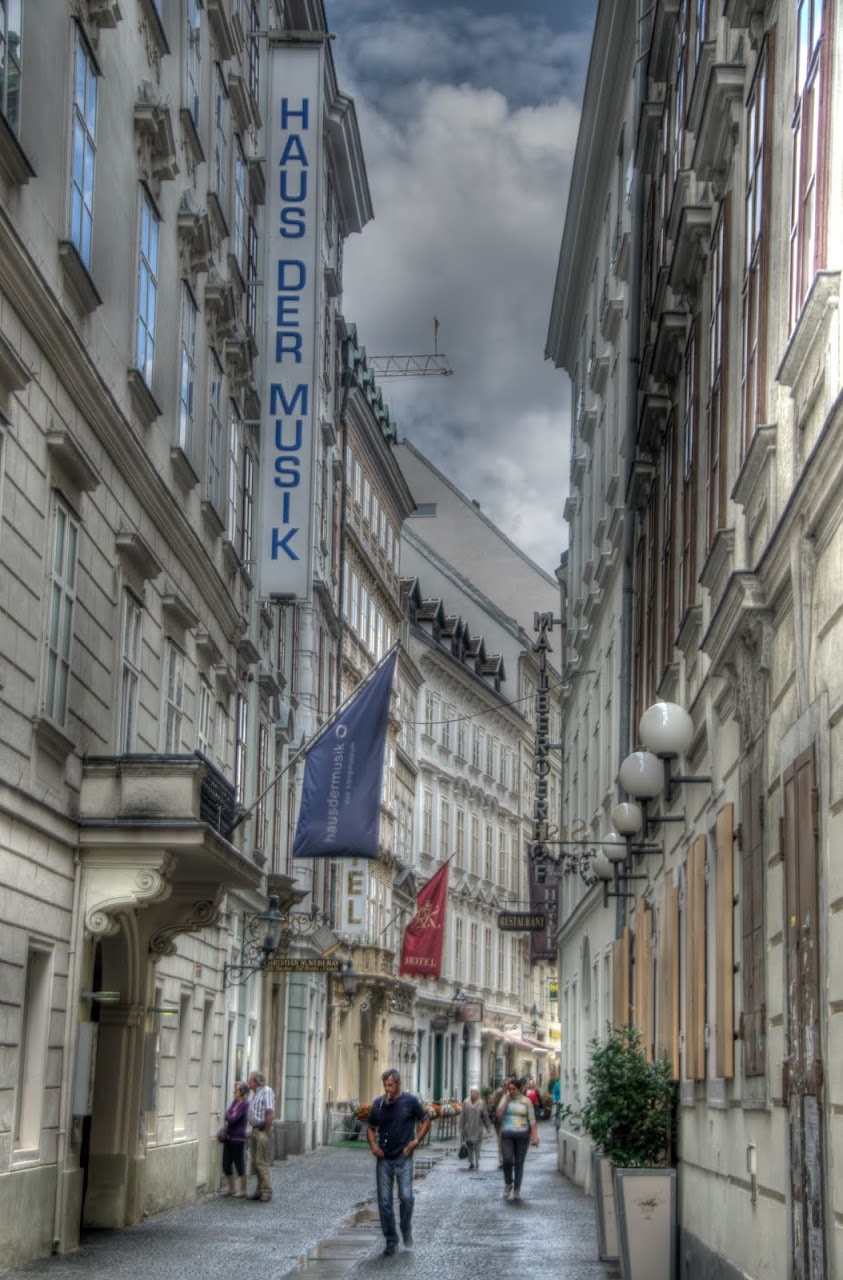
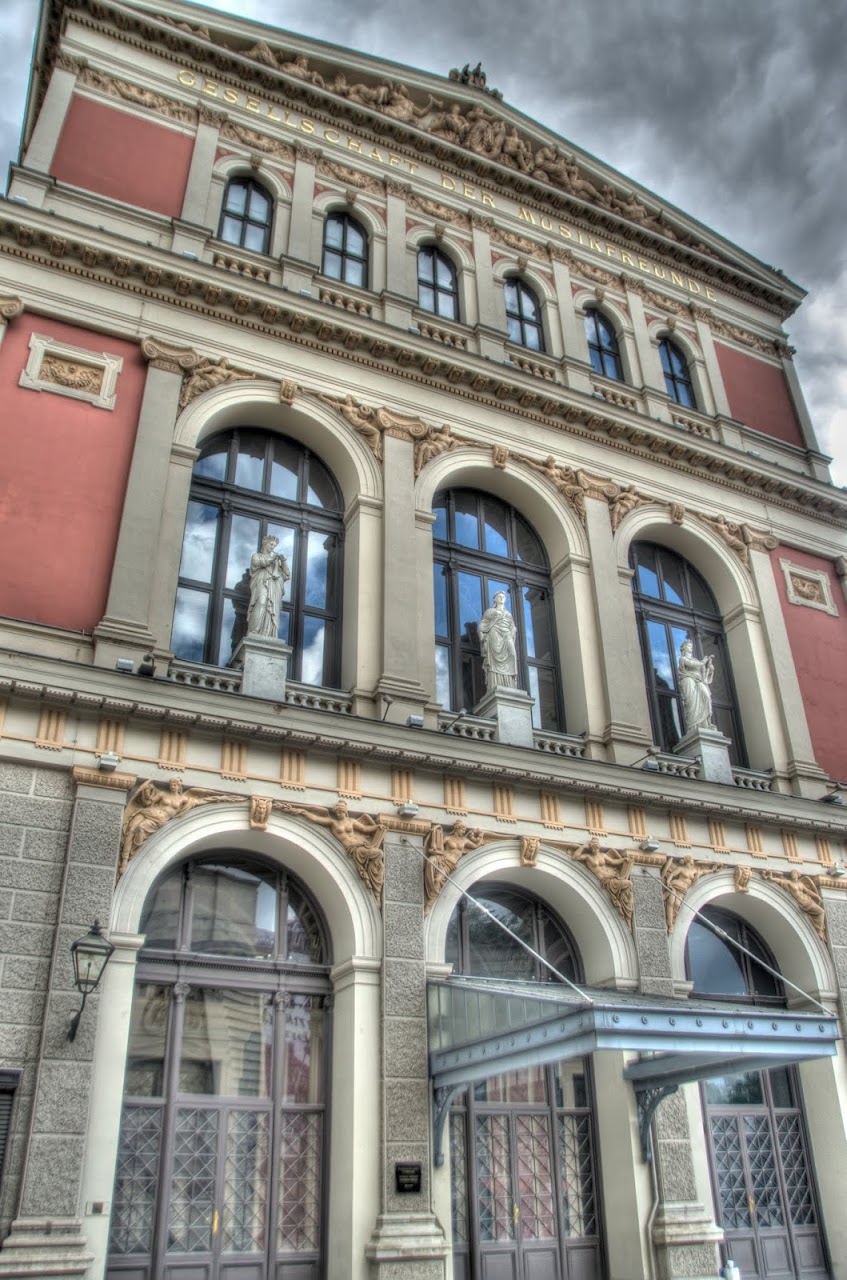
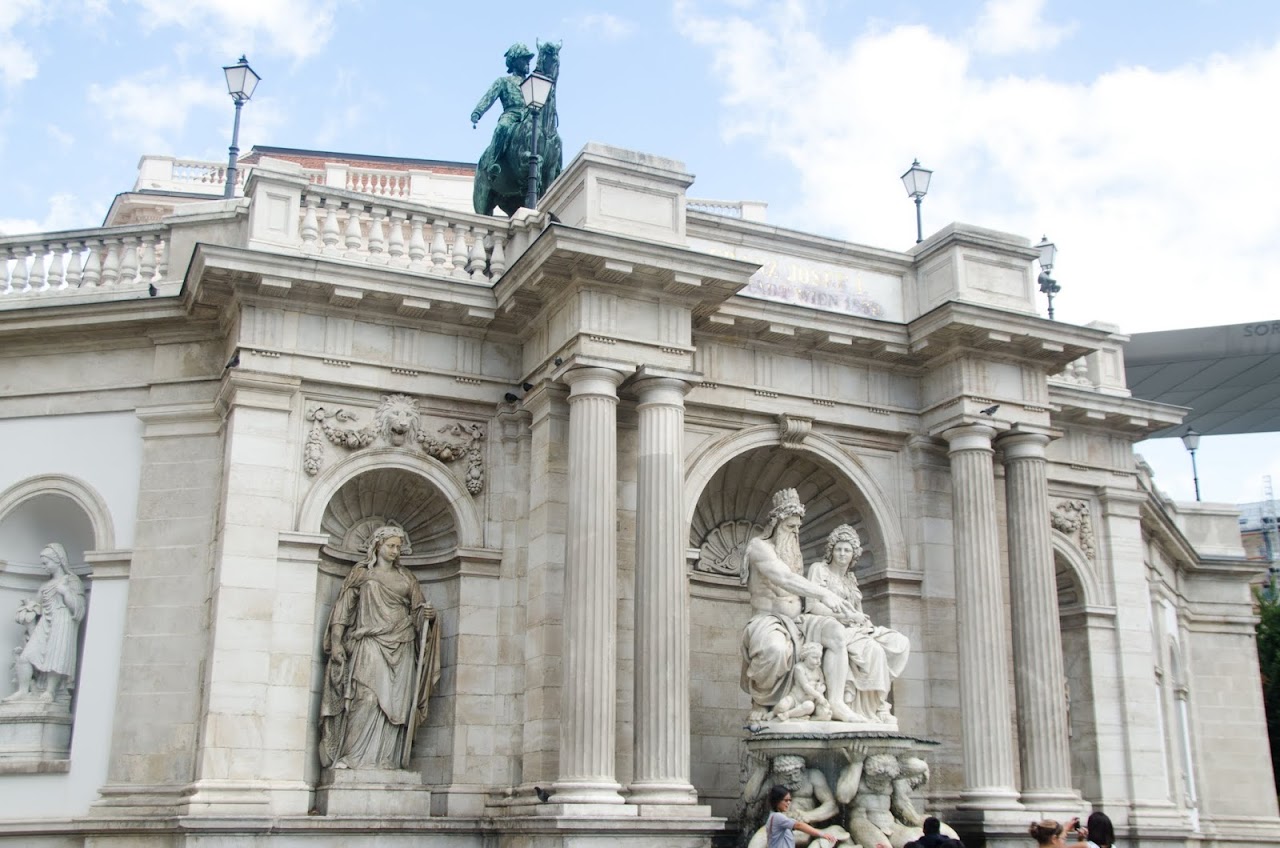

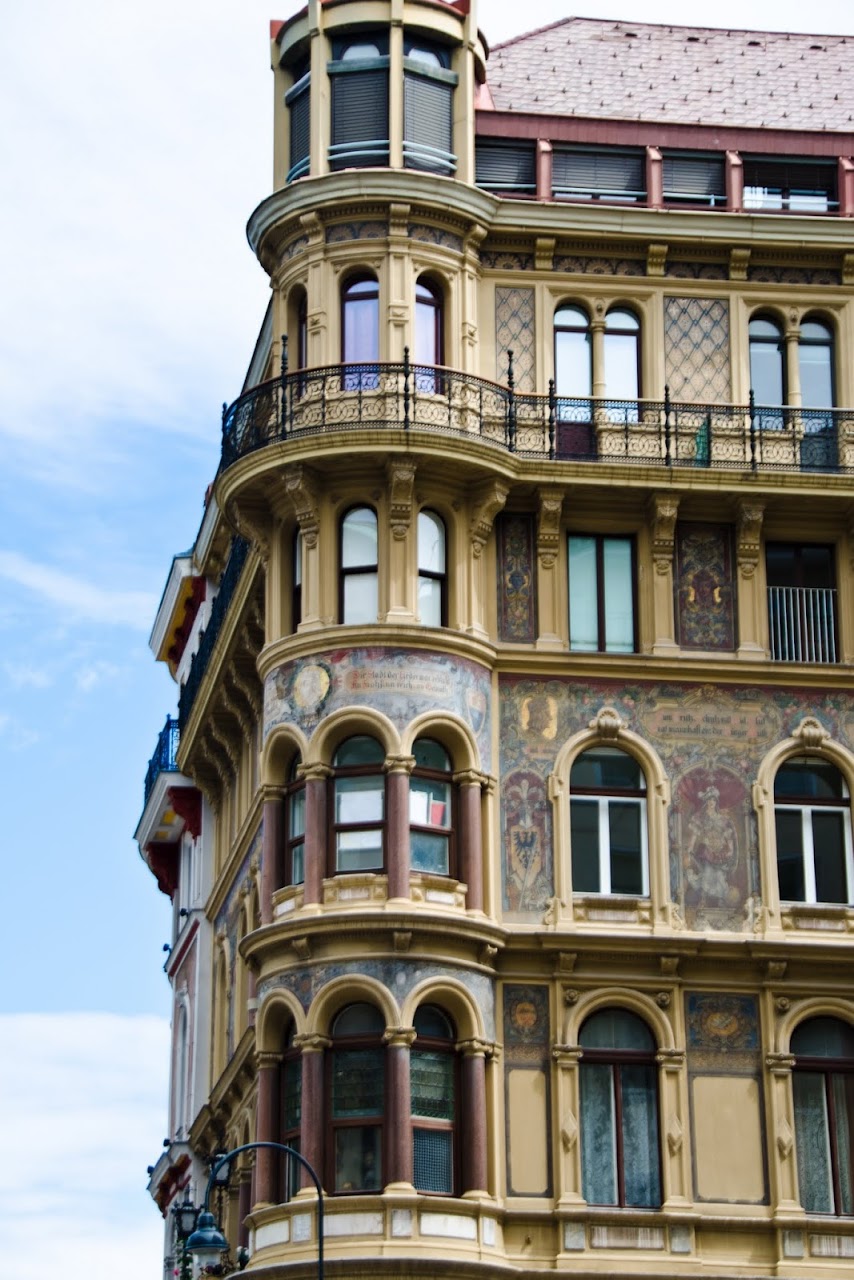
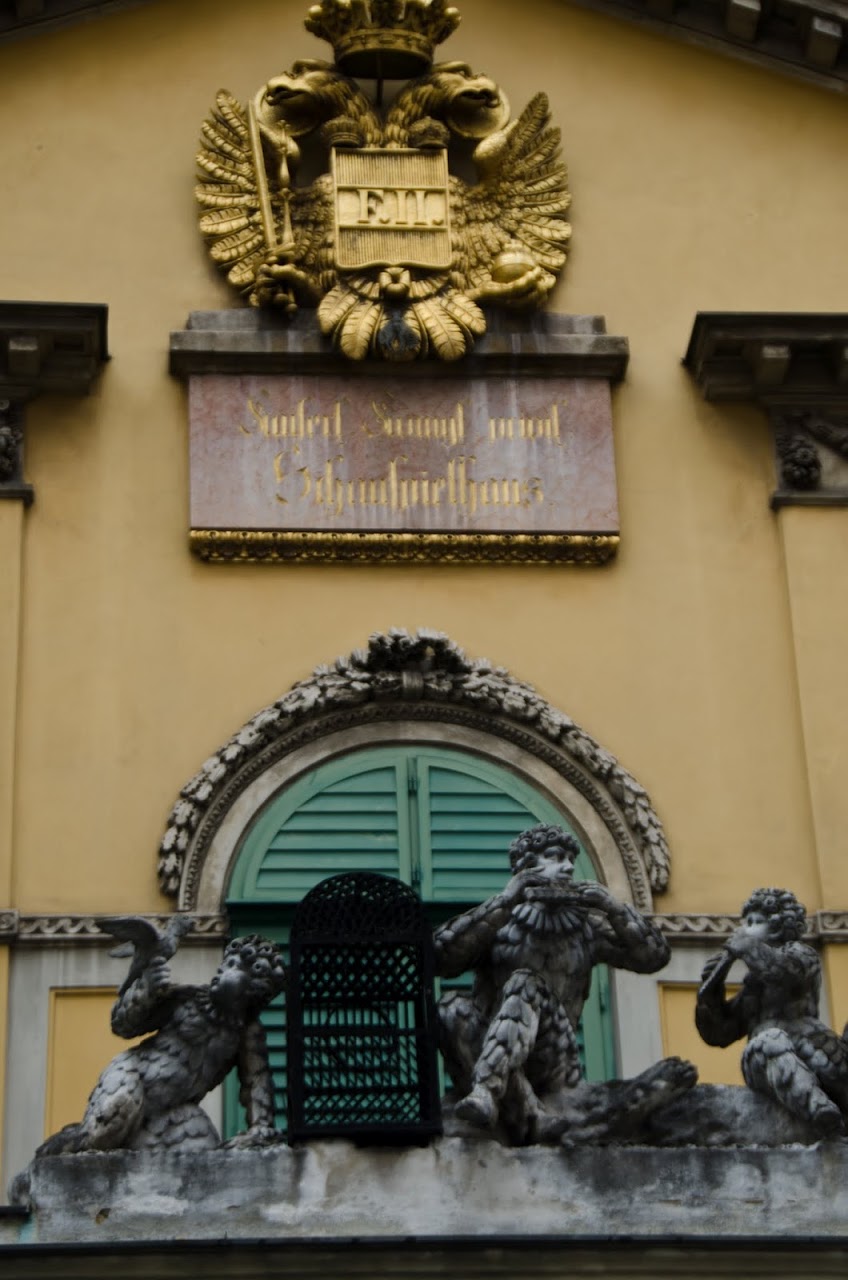
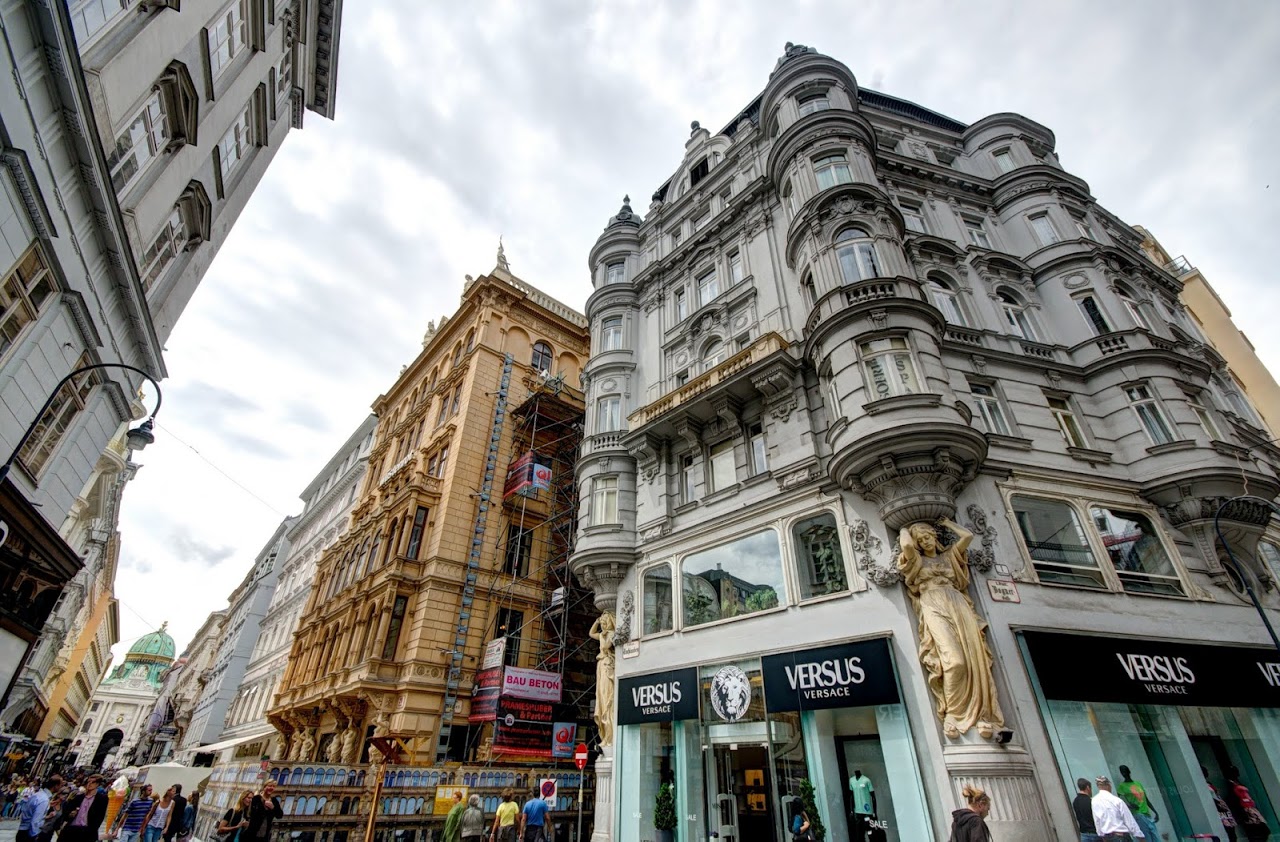
384a.jpg?imgmax=1280)
384a.jpg?imgmax=1280)
384a.jpg?imgmax=1280)
384a.jpg?imgmax=1280)
384a.jpg?imgmax=1280)
384a.jpg?imgmax=1280)
384a.jpg?imgmax=1280)
384a.jpg?imgmax=1280)
384a.jpg?imgmax=1280)
384a.jpg?imgmax=1280)
384a.jpg?imgmax=1280)
384a.jpg?imgmax=1280)
384a.jpg?imgmax=1280)
384a.jpg?imgmax=1280)
384a.jpg?imgmax=1280)
384a.jpg?imgmax=1280)
384a.jpg?imgmax=1280)
384a.jpg?imgmax=1280)
384a.jpg?imgmax=1280)
384a.jpg?imgmax=1280)
384a.jpg?imgmax=1280)
384a.jpg?imgmax=1280)
384a.jpg?imgmax=1280)
384a.jpg?imgmax=1280)
384a.jpg?imgmax=1280)
384a.jpg?imgmax=1280)
384a.jpg?imgmax=1280)
384a.jpg?imgmax=1280)
384a.jpg?imgmax=1280)
384a.jpg?imgmax=1280)
384a.jpg?imgmax=1280)
384a.jpg?imgmax=1280)
384a.jpg?imgmax=1280)
384a.jpg?imgmax=1280)
384a.jpg?imgmax=1280)
384a.jpg?imgmax=1280)
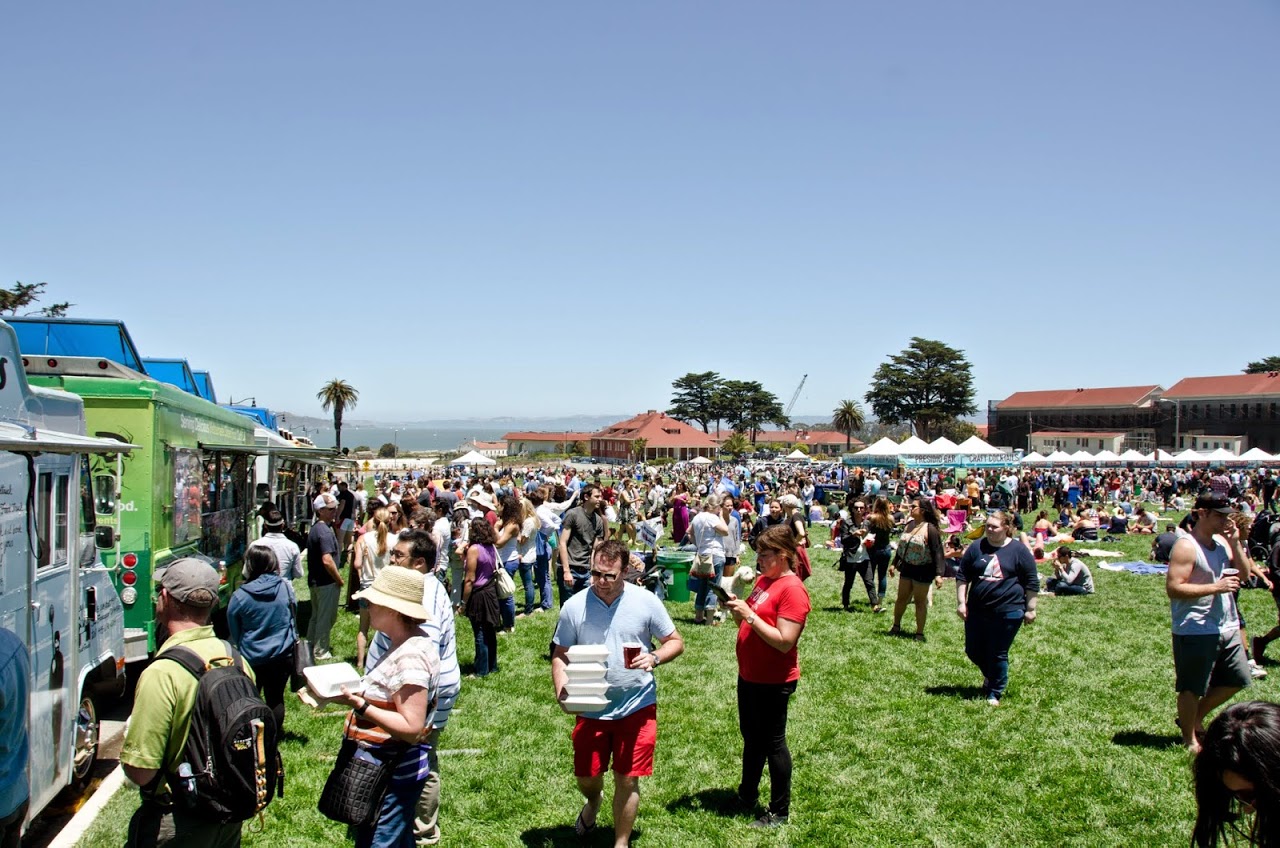


384a.jpg?imgmax=1280)
384a.jpg?imgmax=1280)
384a.jpg?imgmax=1280)
384a.jpg?imgmax=1280)
384a.jpg?imgmax=1280)
384a.jpg?imgmax=1280)
384a.jpg?imgmax=1280)
384a.jpg?imgmax=1280)
384a.jpg?imgmax=1280)
